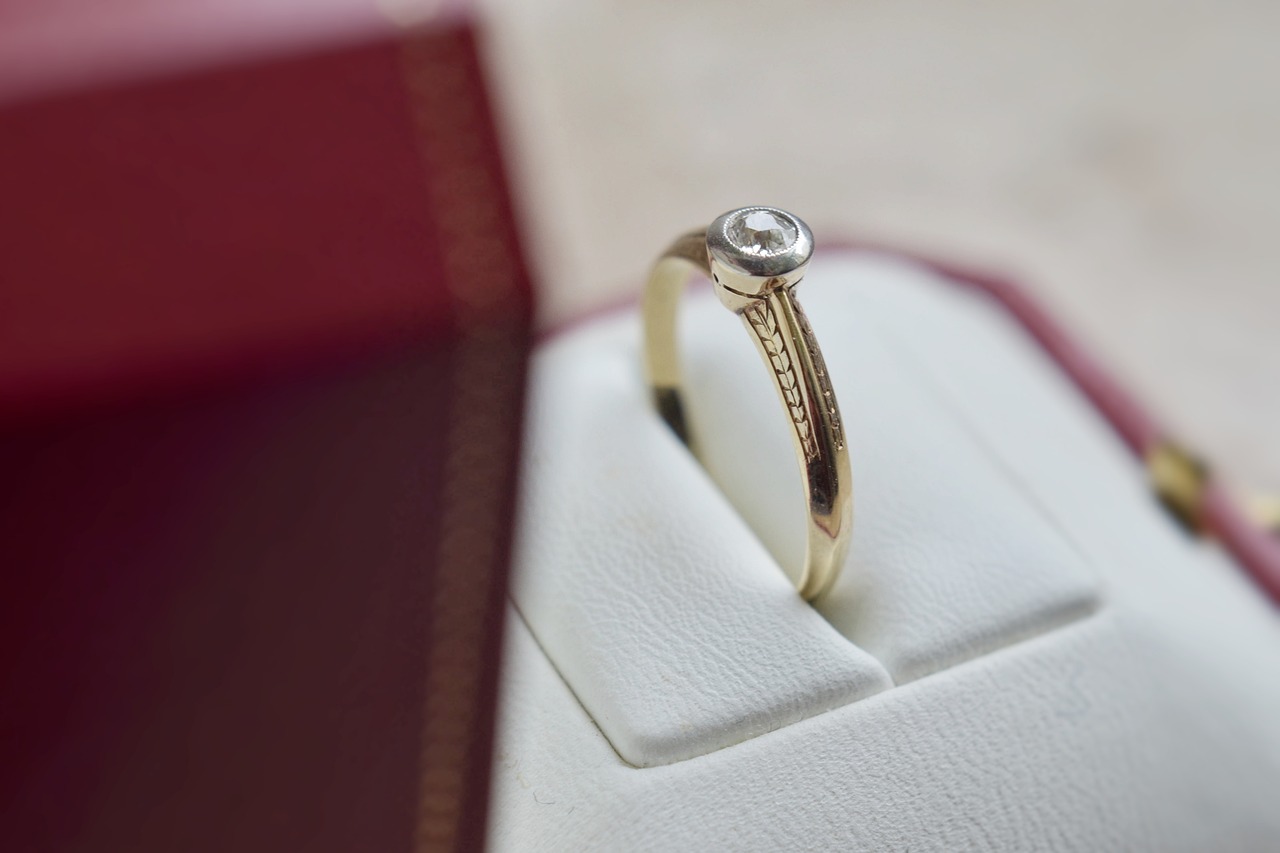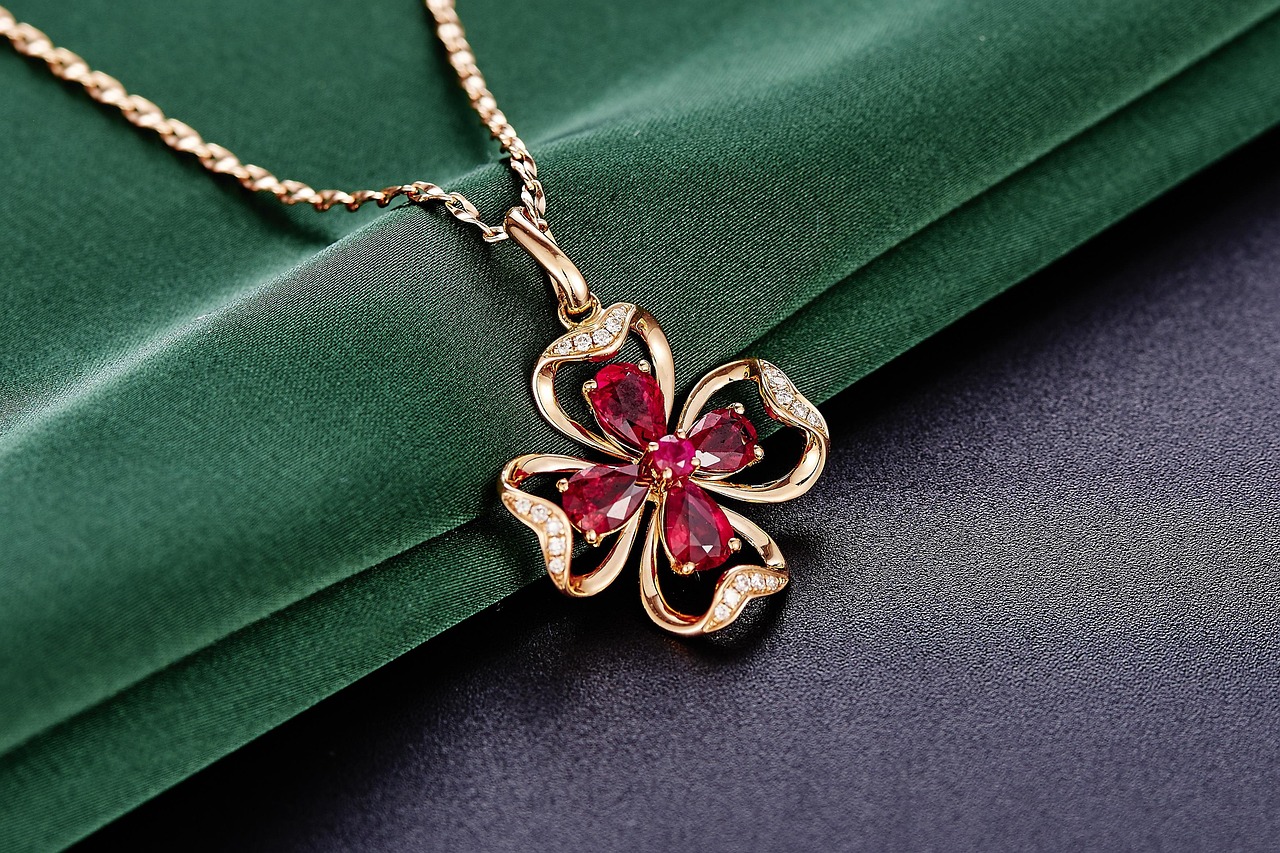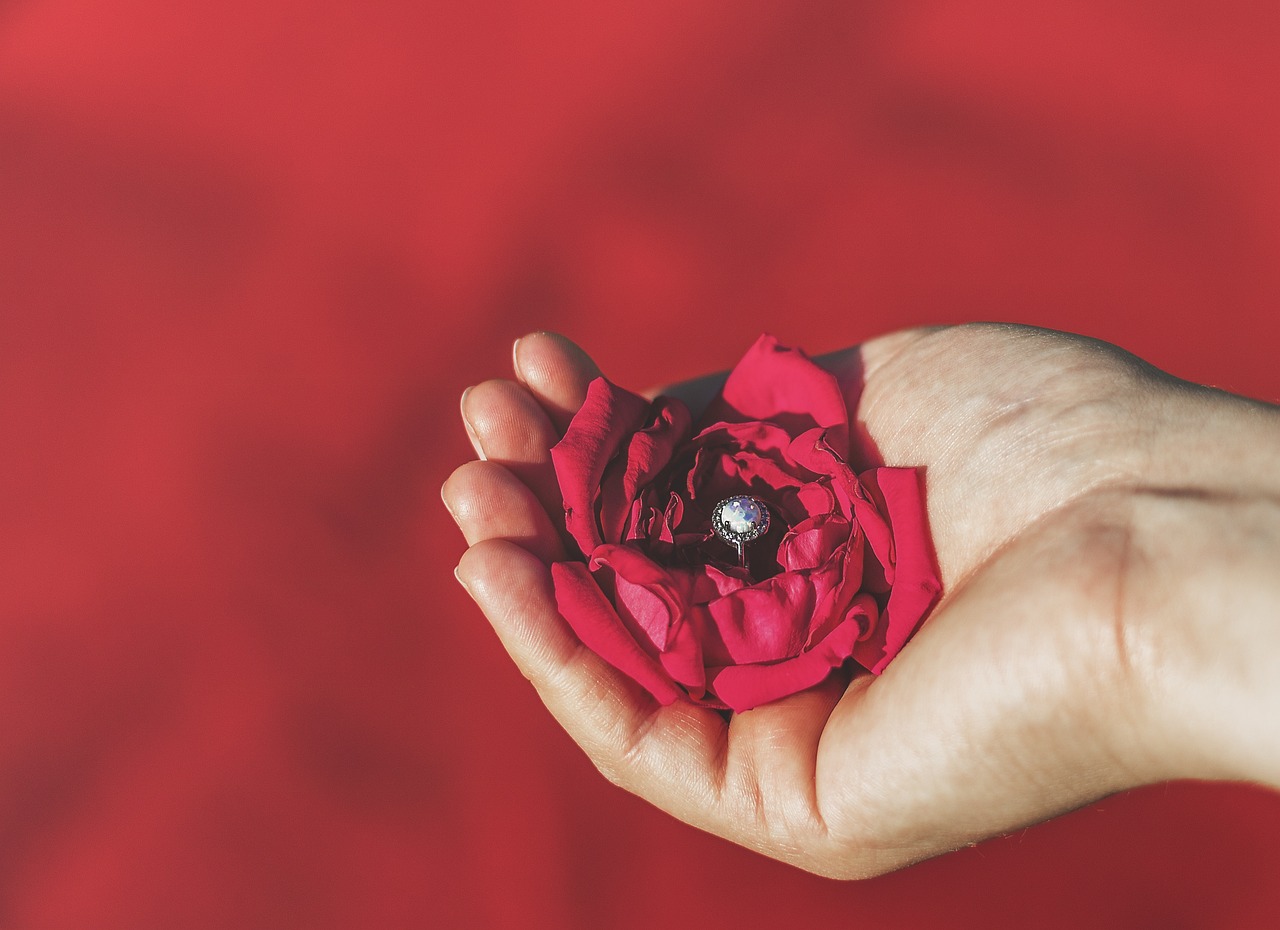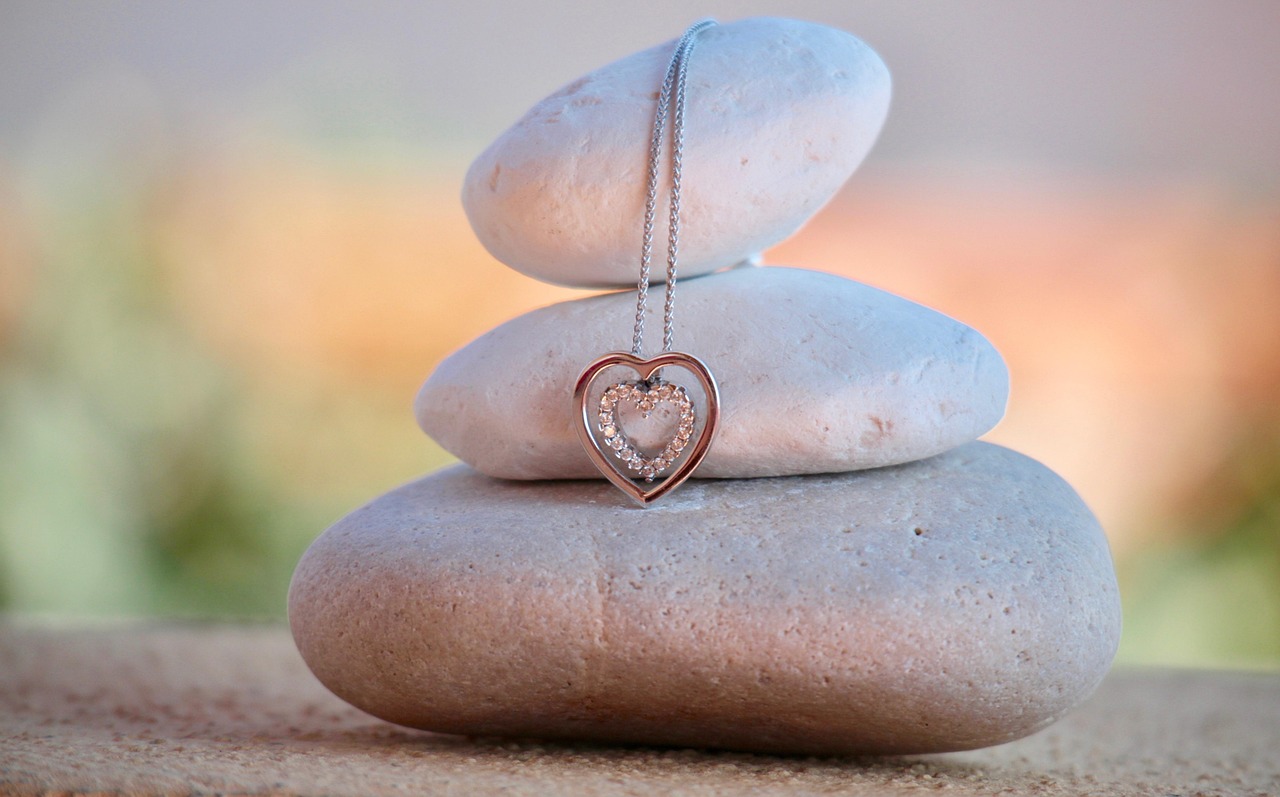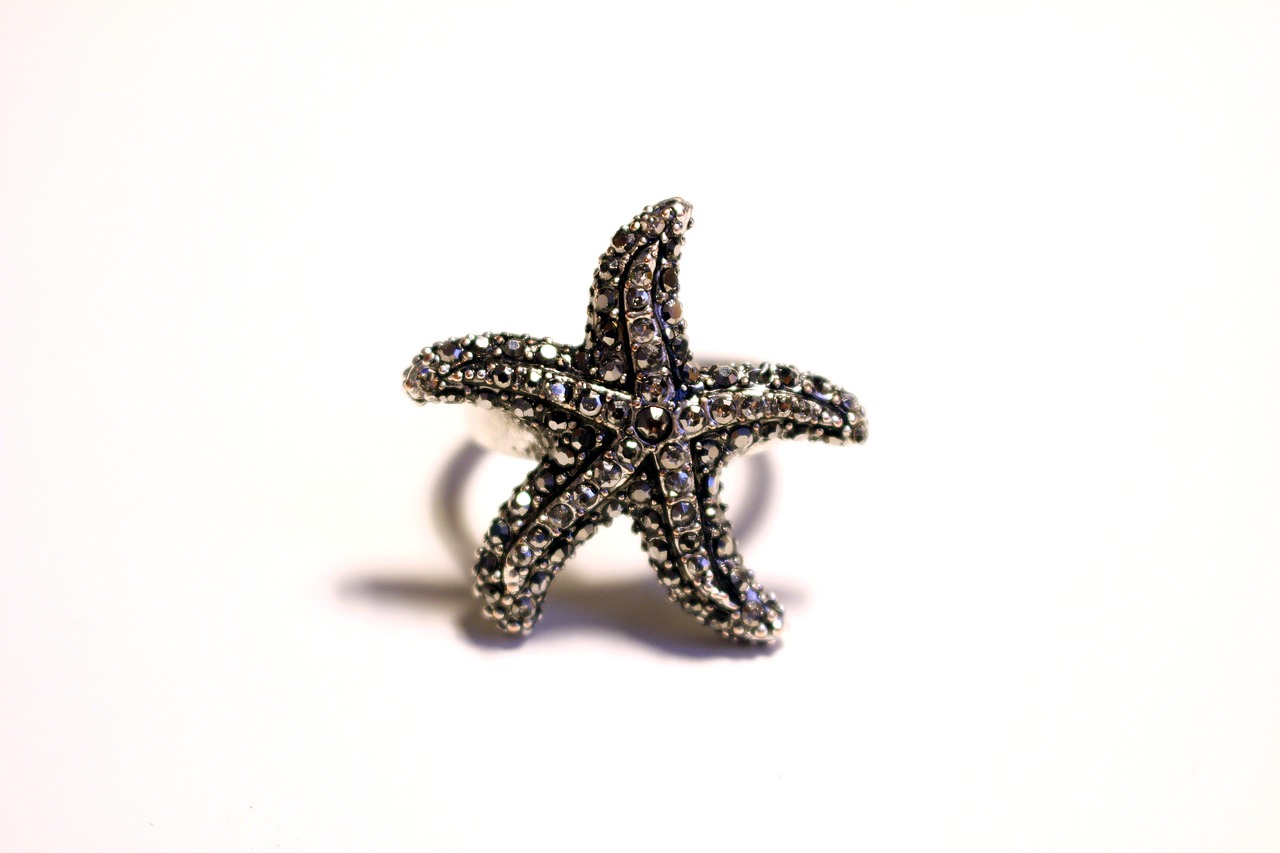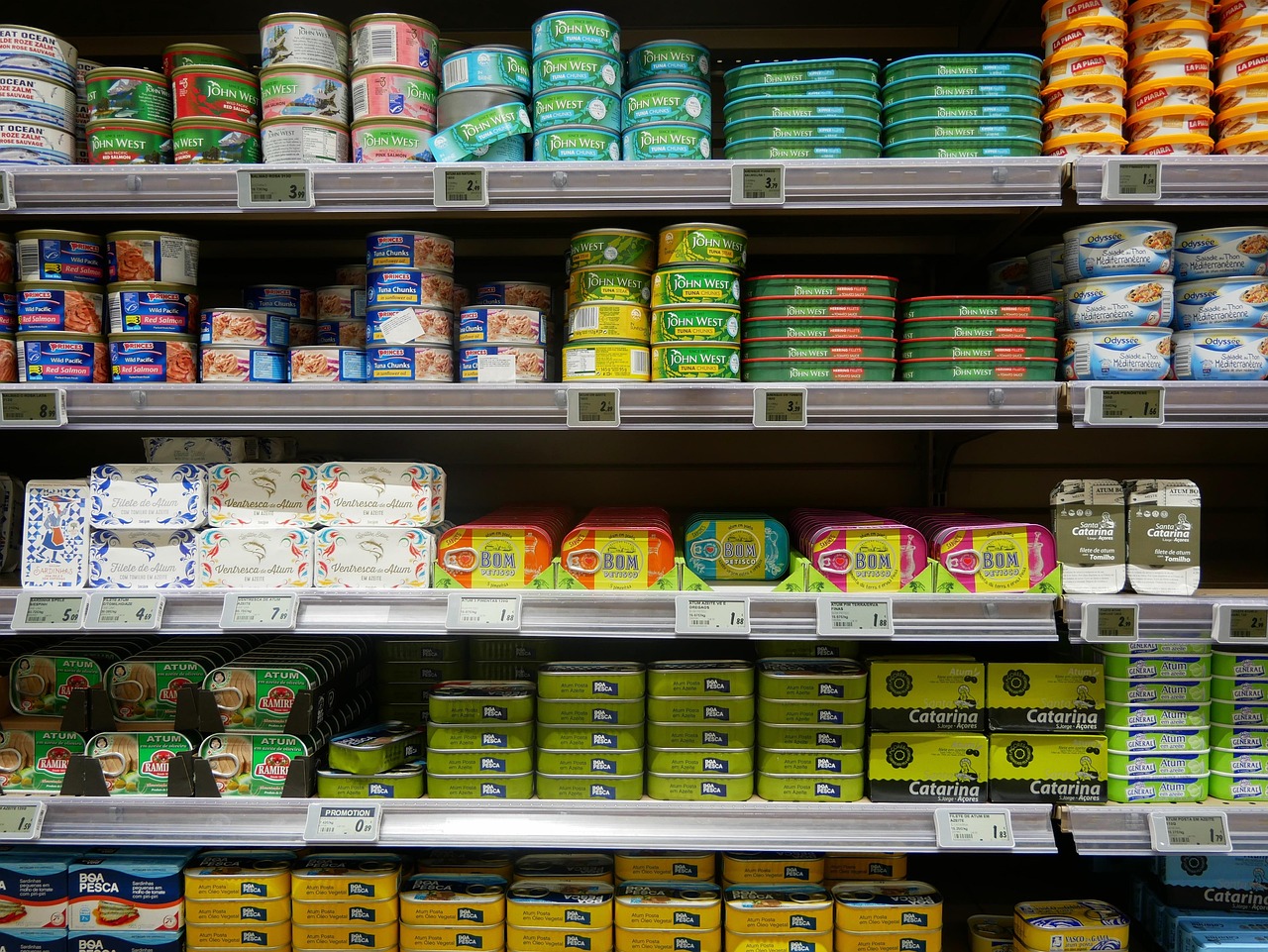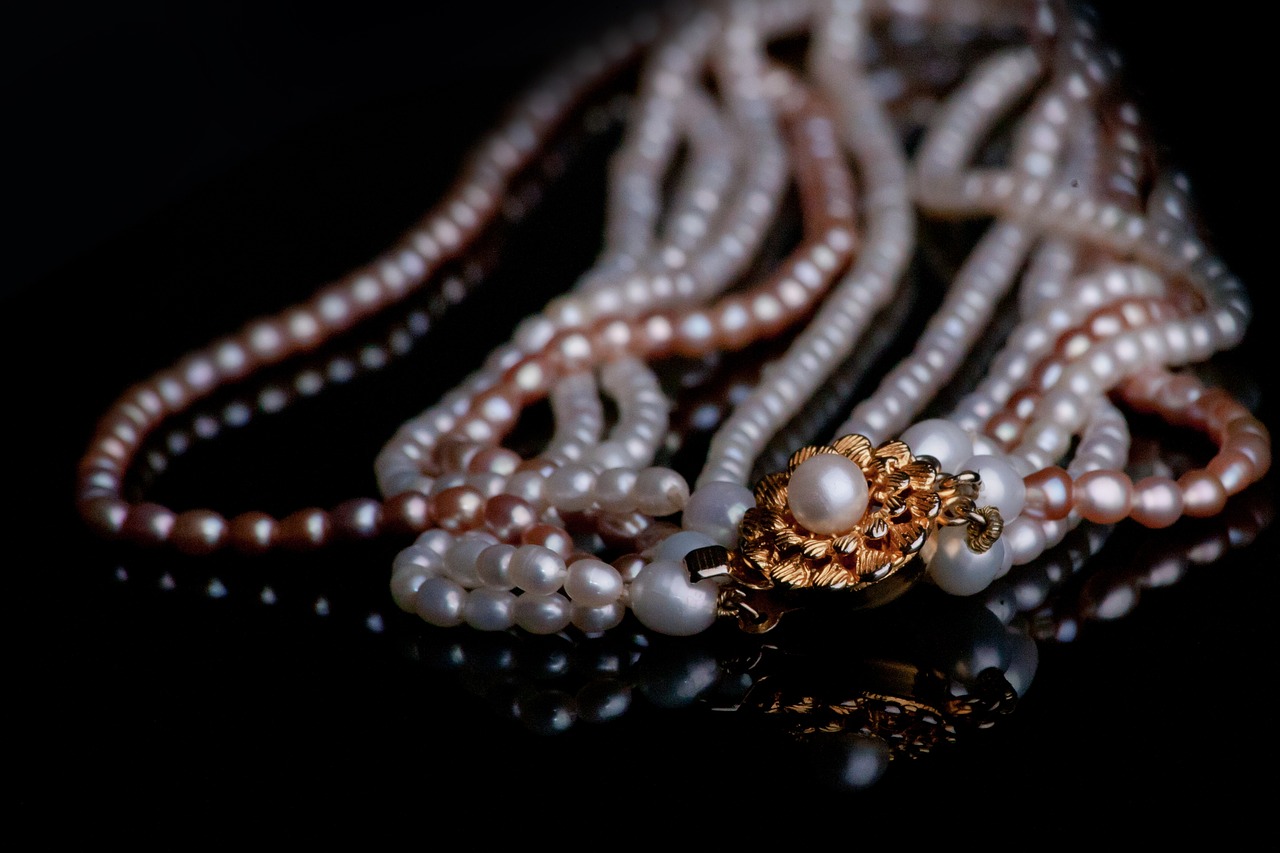The significance of jewelry in wedding traditions transcends mere adornment; it is a powerful symbol of love, commitment, and cultural heritage. Across the globe, various societies incorporate unique forms of jewelry into their wedding rituals, each carrying deep meanings and historical significance. This article delves into the multifaceted role of jewelry in wedding traditions worldwide, exploring its cultural importance and the diverse forms it takes.
Wedding jewelry often embodies love, commitment, and the union of two individuals. It serves as a tangible representation of vows exchanged during the ceremony, marking the beginning of a shared journey. In many cultures, the act of exchanging rings or other pieces of jewelry is a ritual that reinforces the couple’s promises to each other.
Different cultures exhibit unique traditions regarding wedding jewelry, reflecting their values, beliefs, and historical contexts. For instance, in Western cultures, the wedding ring is a timeless symbol of eternal love, while in Eastern cultures, jewelry is often rich in symbolism and intricately designed.
In Western societies, the exchange of wedding rings represents a commitment that lasts forever. The circular shape signifies infinity, and the choice of materials often holds personal significance. The tradition of diamond engagement rings, popularized by marketing campaigns, symbolizes fidelity and a promising future together.
In many Eastern cultures, wedding jewelry is not only beautiful but also carries profound meaning. For example, in Indian weddings, elaborate jewelry and henna designs signify beauty and prosperity. Jewelry often serves as a blessing from the family, symbolizing their support for the new union.
- Henna and Jewelry in Indian Weddings: The application of henna on the bride’s hands, along with intricate jewelry, enhances the celebratory atmosphere.
- Jewelry as Family Heirlooms in African Weddings: In many African cultures, wedding jewelry is passed down through generations, symbolizing family heritage and continuity.
Contemporary influences are reshaping wedding jewelry trends, focusing on personalization and sustainability. Couples are increasingly opting for personalized pieces that reflect their unique love stories, incorporating initials or significant dates. Additionally, with a growing awareness of ethical sourcing, many are choosing sustainable jewelry options, emphasizing responsible practices.
Jewelry often plays a central role in wedding rituals, serving as a focal point during ceremonies. The exchange of jewelry is a ceremonial act that reinforces the couple’s vows, celebrated by family and friends. In some traditions, family members present jewelry to the couple as a blessing, signifying their love and support.
Wedding jewelry significantly influences the overall fashion of the wedding attire. The right pieces can elevate a wedding dress, adding elegance and sophistication. Brides often select jewelry that complements their gown’s style and fabric, while grooms are increasingly embracing accessories like cufflinks and watches to add personality to their attire.
As wedding customs evolve, so does the jewelry associated with them. Emerging trends suggest a continued shift towards personalization and cultural fusion in wedding jewelry. Couples are blending cultural elements into their jewelry choices, creating unique pieces that honor both partners’ heritages. Furthermore, advancements in technology are enabling innovative designs, making it easier for couples to create meaningful and unique jewelry.
In conclusion, the role of jewelry in wedding traditions is profound and varied, reflecting the rich tapestry of human culture and emotion. From ancient heirlooms to modern personalized pieces, jewelry remains a vital part of the wedding experience, symbolizing love, commitment, and the blending of lives.
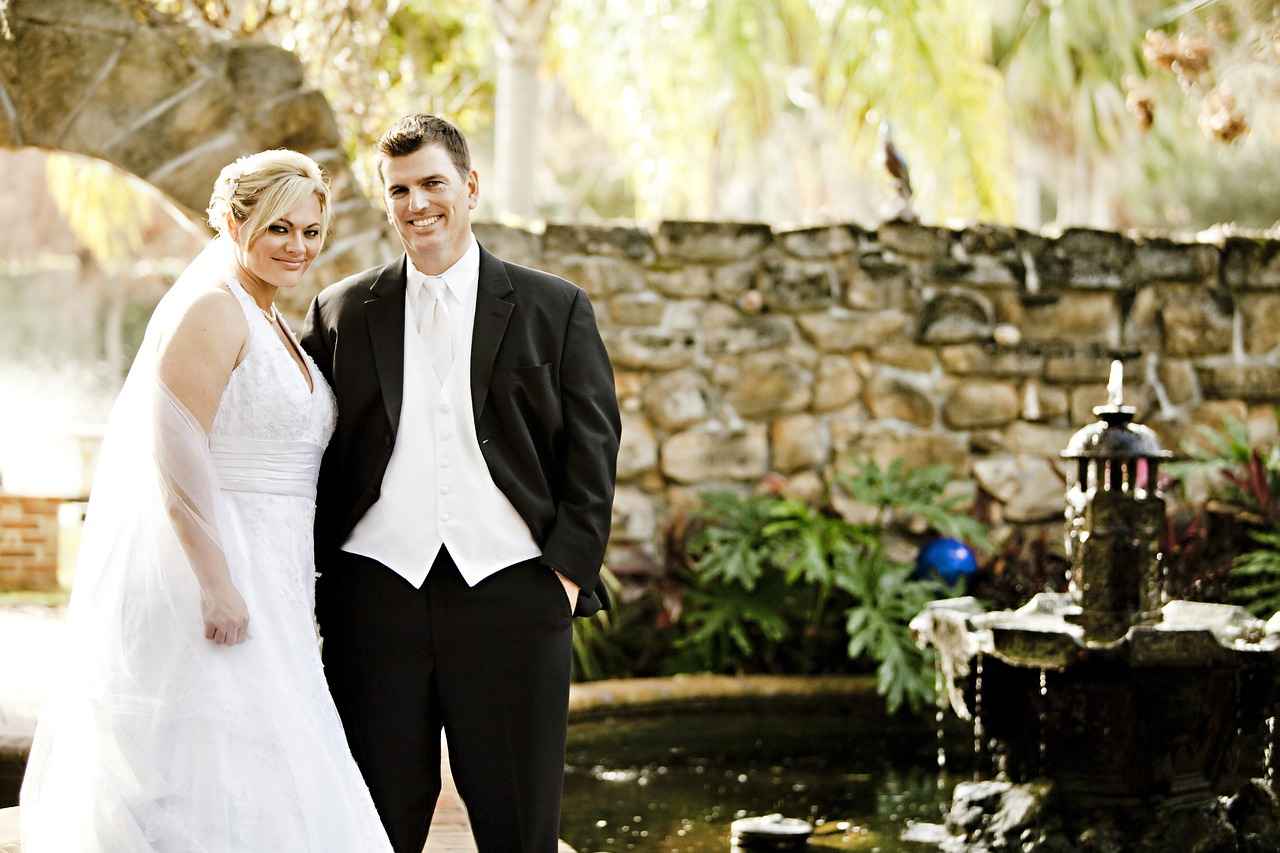
What Does Wedding Jewelry Symbolize?
Wedding jewelry holds a significant place in matrimonial ceremonies across various cultures, representing more than just adornments. It embodies love, commitment, and the profound union of two individuals embarking on a shared journey. The rings, necklaces, and bracelets exchanged during weddings serve as tangible symbols of the vows made, marking the beginning of a lifelong partnership.
At its core, wedding jewelry is a visual representation of the promises exchanged between partners. The act of wearing jewelry signifies a commitment to one another, serving as a daily reminder of the vows taken. For many, the ring symbolizes an unbreakable bond, while other pieces may incorporate personal elements that tell the couple’s unique story.
In many cultures, specific types of jewelry carry distinct meanings. For example, in Western traditions, the wedding ring is often made of precious metals like gold or platinum, symbolizing purity and eternity. The circular shape of the ring signifies an everlasting commitment, with no beginning or end. In contrast, Eastern cultures often use intricate designs that symbolize prosperity and good fortune, emphasizing the couple’s shared future.
Jewelry varies significantly across cultures, reflecting the unique values and beliefs of each society. In India, for instance, bridal jewelry is often elaborate and includes pieces like maang tikka and nath, which not only enhance beauty but also symbolize the bride’s status and family heritage. These pieces are often adorned with precious stones, each carrying its own significance.
- Gold Jewelry: In many cultures, gold is seen as a symbol of wealth and prosperity, making it a popular choice for wedding jewelry.
- Heirloom Pieces: In various African communities, jewelry passed down through generations represents family history and continuity, enhancing the emotional value of the wedding ceremony.
- Modern Interpretations: Today’s couples may opt for personalized jewelry, incorporating unique designs that resonate with their individual stories.
In numerous cultures, the exchange of wedding jewelry is a pivotal part of the ceremony. This ritual reinforces the couple’s vows and is often accompanied by emotional moments shared with family and friends. For instance, in traditional Jewish weddings, the groom places a ring on the bride’s finger while reciting vows, symbolizing his commitment.
Additionally, jewelry can serve as a blessing from family members, who often present the couple with meaningful pieces to signify their support and love. This act enhances the emotional weight of the jewelry, making it not just an accessory but a cherished symbol of familial bonds.
As societal values evolve, so do the trends in wedding jewelry. Many couples today are focused on sustainability and ethical sourcing, seeking out pieces that reflect their values. This shift has led to the rise of eco-friendly jewelry, crafted from recycled materials or ethically sourced stones. Moreover, the trend of personalization allows couples to create unique pieces that reflect their love story, incorporating initials, significant dates, or custom engravings.
Furthermore, technological advancements in jewelry design enable couples to explore innovative styles and customization options, ensuring their wedding jewelry is as unique as their relationship. This blend of tradition and modernity creates a rich tapestry of choices for couples, allowing them to express their individuality while honoring their cultural roots.
Ultimately, wedding jewelry is more than just an accessory; it is a powerful symbol of love, commitment, and the shared journey of two individuals. As traditions evolve and modern influences emerge, the significance of wedding jewelry continues to grow, reflecting the diverse narratives of couples around the world.
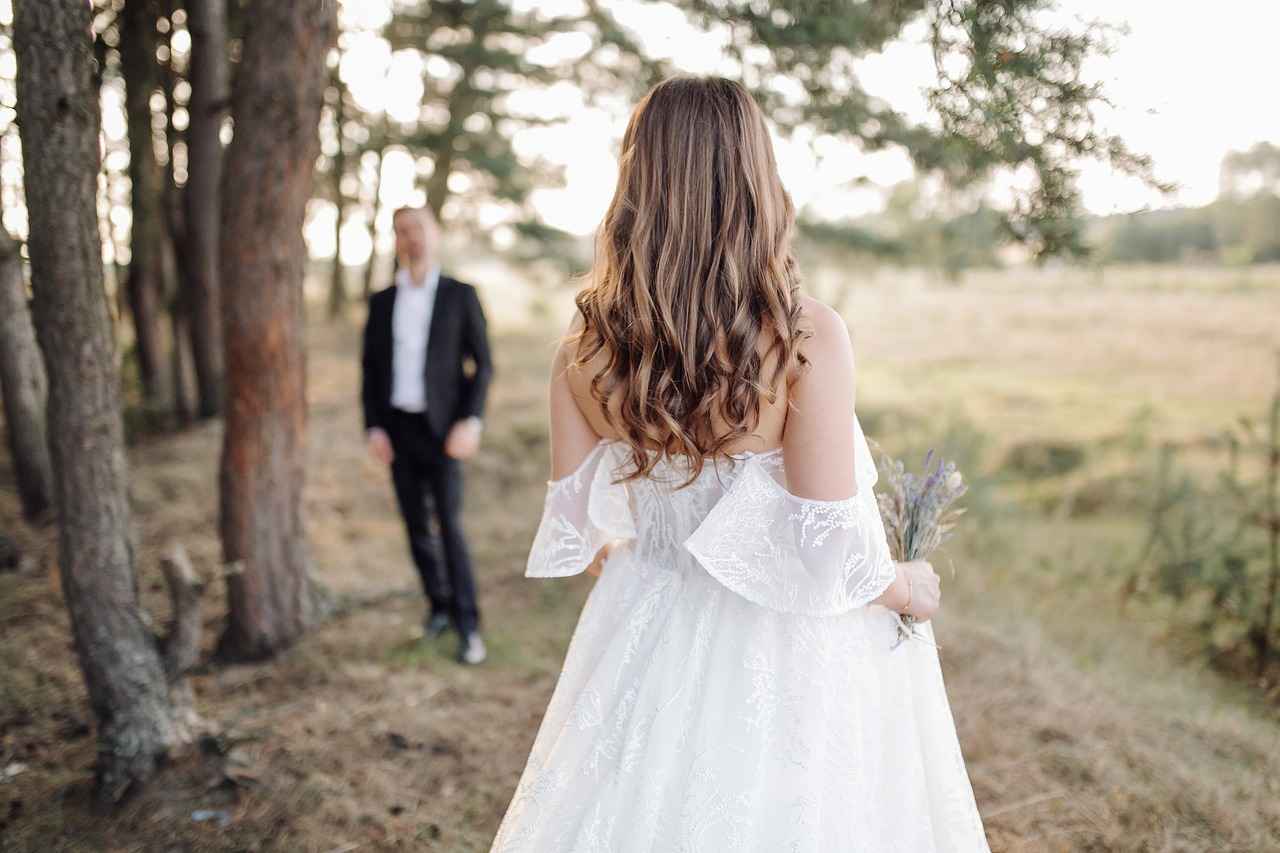
How Does Jewelry Vary Across Cultures?
Jewelry has long been a significant part of wedding traditions across the globe. Each culture incorporates unique elements into their wedding jewelry, reflecting their distinct values, beliefs, and historical contexts. This diversity not only showcases the beauty of different customs but also highlights the profound meanings attached to these adornments.
Different cultures have unique traditions regarding wedding jewelry. These variations reflect the values, beliefs, and historical contexts of each society, showcasing the diversity of wedding customs.
- In Western Cultures: Wedding rings are typically exchanged as a symbol of eternal love and commitment. The circular shape signifies infinity, and the materials used—often gold or platinum—hold personal significance for the couple.
- In Indian Weddings: Jewelry plays a crucial role, with brides often adorned in elaborate gold pieces that symbolize prosperity and good fortune. The intricate designs of the jewelry often tell stories of the couple’s heritage.
- In African Traditions: Jewelry is often passed down through generations, representing family heritage and continuity. Pieces like beaded necklaces or gold bangles are not just decorative but also hold deep emotional value.
- In Middle Eastern Cultures: Jewelry is often lavish and ornate, with pieces like the bridal set known as ‘Mahr’ representing a groom’s commitment and respect towards the bride. This jewelry often includes precious stones and intricate designs.
These cultural differences highlight how wedding jewelry serves as a tangible representation of love, commitment, and societal values. In many cultures, the jewelry worn during weddings is not merely decorative; it symbolizes the union of two families and the beginning of a shared journey.
Exploring the unique traditions surrounding wedding jewelry reveals fascinating insights into various cultures:
- Henna and Jewelry in Indian Weddings: The application of henna on the bride’s hands, paired with elaborate jewelry, enhances the celebratory atmosphere. Both elements signify beauty and prosperity.
- Jewelry as Family Heirlooms in African Weddings: In many African cultures, wedding jewelry is a cherished family heirloom, symbolizing the couple’s connection to their ancestry and the continuity of family traditions.
- Traditional Chinese Jewelry: In Chinese weddings, brides often wear gold jewelry, which symbolizes wealth and prosperity. The color red, often incorporated into the jewelry, represents good luck and happiness.
These traditions not only enrich the wedding ceremony but also emphasize the importance of jewelry as a symbol of love, commitment, and family ties.
In today’s world, modern trends are reshaping wedding jewelry. Couples are increasingly leaning towards personalization and sustainability:
- Personalized Jewelry: Many couples are opting for pieces that reflect their unique love stories, incorporating initials, dates, or custom engravings to make their wedding jewelry special.
- Sustainable and Ethical Choices: With growing awareness of ethical sourcing, many couples are choosing sustainable jewelry options. This trend emphasizes the importance of responsible practices in the jewelry industry.
As globalization continues to influence cultural exchanges, couples are blending traditional elements with modern designs, creating unique pieces that honor their diverse heritages.
Jewelry often plays a central role in wedding rituals, serving as a focal point in ceremonies:
- Exchange of Jewelry: In many cultures, the exchange of jewelry is a ceremonial act that reinforces the couple’s vows, often celebrated by family and friends.
- Jewelry as a Blessing: Family members may present jewelry to the couple as a blessing, signifying their support and love for the new union.
These moments are not only emotionally charged but also highlight the significance of jewelry in reinforcing familial bonds and cultural traditions.
Western Wedding Rings: A Timeless Tradition
Western wedding rings are more than just pieces of jewelry; they are profound symbols of love and commitment. The tradition of exchanging rings during marriage ceremonies has deep roots, reflecting a couple’s promise to one another. This article delves into the significance, symbolism, and cultural nuances surrounding Western wedding rings, providing a comprehensive understanding of their role in modern weddings.
Wedding rings are often characterized by their circular shape, which represents infinity. This endless loop signifies that love knows no bounds and continues indefinitely. Additionally, the choice of materials—such as gold, platinum, or even alternative metals—often carries personal significance for the couple, reflecting their unique bond and shared journey. For many, the ring is a daily reminder of their vows and the life they have chosen to build together.
The craftsmanship involved in creating wedding rings varies widely. Couples often choose between traditional styles and more modern designs. Custom rings allow for personal touches, such as engravings or unique gemstone settings, making each piece truly one-of-a-kind. Many jewelers now offer options for sustainable materials, appealing to environmentally conscious couples.
- Gold: A classic choice, available in yellow, white, and rose varieties.
- Platinum: Known for its durability and hypoallergenic properties.
- Alternative Metals: Options like titanium and tungsten are gaining popularity for their modern appeal.
- Gemstones: Some couples opt for colored stones, such as sapphires or emeralds, to add a personal touch.
In Western cultures, wedding rings are often worn on the fourth finger of the left hand, believed to have a vein that runs directly to the heart, symbolizing deep emotional connection. However, variations exist even within Western traditions. For instance, in some cultures, the engagement ring is worn on the right hand before the wedding ceremony, after which it is moved to the left hand.
The engagement ring is a critical component of the wedding ring tradition. Typically adorned with a diamond, it symbolizes a promise of fidelity and commitment. The trend of diamond engagement rings was significantly popularized by marketing campaigns, particularly the famous slogan, “A diamond is forever.” However, many couples are now choosing alternative gemstones, reflecting their personal styles and values.
Today’s couples are increasingly looking for ways to personalize their wedding rings. This trend includes incorporating unique designs, using family heirlooms, or selecting ethically sourced materials. Sustainable jewelry is also becoming more prevalent, as couples seek to make responsible choices that align with their values.
The act of exchanging rings during the wedding ceremony is a powerful ritual. It serves as a public declaration of love and commitment, witnessed by family and friends. This moment is often accompanied by heartfelt vows, reinforcing the emotional weight of the occasion. The rings symbolize the couple’s promise to support and cherish one another throughout their lives.
As wedding customs evolve, so do the trends surrounding wedding rings. There is a noticeable shift towards personalization and cultural fusion, where couples blend different cultural elements into their ring choices. Additionally, advancements in technology are enabling innovative designs, allowing for greater customization and creativity in wedding rings.
In conclusion, Western wedding rings encapsulate a rich tradition that signifies love, commitment, and individuality. As couples continue to redefine their relationships and values, the significance of wedding rings will undoubtedly adapt, ensuring that these symbols of love remain timeless.
Diamond Engagement Rings: A Sign of Commitment
When it comes to wedding traditions, few symbols are as universally recognized as the diamond engagement ring. This iconic piece of jewelry has become synonymous with love and commitment in Western cultures, but its rise to prominence is not merely a reflection of romantic ideals. Instead, it is a fascinating interplay of marketing strategies, cultural shifts, and evolving societal norms.
The popularity of diamond engagement rings can be traced back to a series of highly successful marketing campaigns, most notably by the De Beers diamond company in the mid-20th century. In 1947, the slogan “A diamond is forever” was introduced, establishing the diamond as the ultimate symbol of enduring love. This campaign not only transformed consumer perceptions but also created a cultural expectation that a diamond engagement ring is a necessary part of a marriage proposal.
Beyond their commercial success, diamond engagement rings carry profound symbolism. They represent a promise of fidelity, a commitment to a shared future, and the emotional investment of both partners in their relationship. The diamond, with its unmatched brilliance and durability, serves as a metaphor for the strength and clarity of the couple’s love.
In recent years, there has been a noticeable shift toward alternative gemstones for engagement rings. Many couples are now opting for sapphires, emeralds, or even lab-created diamonds, which can be more affordable and ethically sourced. This trend reflects a growing desire for personalized jewelry that resonates with individual values and styles.
While diamond engagement rings dominate Western weddings, cultural influences play a significant role in shaping jewelry choices worldwide. In some cultures, engagement rings may not even be a tradition, while in others, they are lavishly decorated with intricate designs and meaningful symbols. For instance, in Indian weddings, the use of gold and colored stones is prevalent, showcasing the rich heritage and artistry of the culture.
The future of engagement rings is likely to continue evolving as societal norms change. With an increasing focus on sustainability and ethical sourcing, couples are becoming more conscious of the impact of their choices. Innovations in jewelry design, including 3D printing and customizable options, are also paving the way for unique, personalized engagement rings that reflect the couple’s journey together.
In summary, diamond engagement rings have become a powerful symbol of love and commitment in Western weddings, largely due to effective marketing strategies. However, as societal values shift, couples are exploring alternative options and embracing cultural diversity in their choices. The engagement ring, whether a classic diamond or a personalized gem, remains a cherished representation of a couple’s promise to each other.
Alternative Gemstones: A Modern Twist
In recent years, there has been a noticeable shift in the world of wedding jewelry. Alternative gemstones have gained popularity among couples looking to express their individuality and break away from traditional norms. This trend reflects a broader movement towards personalization in all aspects of life, including significant milestones like weddings.
Many couples are now opting for alternative gemstones due to their unique aesthetic appeal and the stories they can tell. Unlike diamonds, which are often seen as a conventional choice, gemstones like sapphires, emeralds, and even lab-created stones offer a wide array of colors, shapes, and meanings. This allows couples to select a stone that resonates with their personal style and values.
- Cost-Effectiveness: Many alternative gemstones are more affordable than diamonds, allowing couples to allocate their budgets elsewhere.
- Unique Aesthetics: With a variety of colors and styles, alternative gemstones can create a distinctive look that sets a couple’s jewelry apart.
- Symbolic Meanings: Different gemstones carry various meanings and attributes, allowing couples to choose stones that symbolize their love story.
Several alternative gemstones have emerged as favorites among couples. Here are some of the most sought-after options:
- Sapphires: Known for their deep blue hues, sapphires symbolize loyalty and nobility.
- Emeralds: With their vibrant green color, emeralds represent rebirth and love.
- Moissanite: A lab-created stone that closely resembles diamonds, moissanite is prized for its brilliance and fire.
- Rose Quartz: Often associated with unconditional love, rose quartz offers a softer, romantic aesthetic.
Choosing an alternative gemstone allows couples to infuse their personalities into their wedding jewelry. For example, a couple that loves the ocean may opt for an aquamarine, while those who appreciate vintage aesthetics might choose an antique setting with a colored stone. This personalization extends to the design of the ring itself, which can be tailored to reflect the couple’s unique journey together.
As sustainability becomes increasingly important, many couples are seeking out ethically sourced gemstones. Lab-created stones, in particular, have a smaller environmental footprint compared to mined diamonds. Additionally, some natural gemstones are sourced from responsible mines that prioritize environmental stewardship and fair labor practices.
When selecting an alternative gemstone, couples should consider several factors:
- Durability: Some gemstones are softer than diamonds and may require more care. For example, opals and pearls are beautiful but need to be handled delicately.
- Color and Clarity: The color of a gemstone can significantly affect its appearance. Couples should choose a hue that resonates with them and complements their skin tone.
- Setting: The way a gemstone is set can enhance its beauty. Couples should explore various settings that highlight their chosen stones.
In conclusion, the rise of alternative gemstones in wedding jewelry is a testament to the evolving nature of love and commitment. Couples are embracing their uniqueness and making choices that reflect their individual stories. By opting for these stunning stones, they not only celebrate their love but also contribute to a more personalized and sustainable approach to wedding traditions.
Eastern Wedding Jewelry: Rich in Symbolism
In many Eastern cultures, wedding jewelry is not merely an accessory; it is a profound representation of cultural heritage, emotional significance, and intricate artistry. These pieces are often adorned with symbols that convey deep meanings, reflecting the values and traditions of the society in which they are created. The designs can be elaborate, featuring intricate patterns and vibrant gemstones, each element telling a unique story.
Wedding jewelry in Eastern cultures often symbolizes prosperity, love, and commitment. For instance, in Indian weddings, gold jewelry is believed to bring good fortune and wealth to the couple. The use of specific gemstones can also carry individual meanings; for example, rubies symbolize passion, while emeralds represent hope. These pieces are not only beautiful but also serve as a tangible connection to the couple’s heritage and familial bonds.
Eastern wedding jewelry features designs that are deeply rooted in history and tradition. For example, the Meenakari technique in Indian jewelry involves intricate enamel work that showcases vibrant colors and detailed patterns, often depicting scenes from mythology. Similarly, in Middle Eastern cultures, jewelry may include calligraphic inscriptions that convey blessings or significant quotes from religious texts. These designs not only enhance the beauty of the jewelry but also serve as a reminder of the couple’s cultural identity.
- Necklaces: Often elaborate and layered, necklaces can feature precious stones and intricate designs that enhance the bride’s attire.
- Bangles: In many cultures, bangles are essential wedding accessories. They are often worn in multiples and symbolize the bride’s marital status.
- Earrings: Statement earrings are common, often designed to complement the necklace and enhance the overall look.
- Headpieces: In cultures such as Indian and Middle Eastern, headpieces like the matha patti or tiara are worn to signify beauty and status.
In many Eastern societies, wedding jewelry is often passed down through generations, becoming family heirlooms that carry significant emotional weight. For instance, a bride may wear her mother’s or grandmother’s jewelry, symbolizing continuity and the bond between generations. This practice not only enhances the sentimental value of the jewelry but also reinforces the importance of family in the couple’s new life together.
During wedding ceremonies, jewelry is often a focal point, with rituals surrounding its exchange. In some cultures, the bride and groom may exchange jewelry as part of the vows, signifying their commitment to one another. Additionally, family members may present jewelry to the couple as a blessing, enhancing the emotional significance of these precious items.
With the rise of globalization and changing societal norms, modern trends are beginning to influence traditional wedding jewelry. Many couples are now opting for personalized pieces that reflect their unique love stories, incorporating modern designs while honoring traditional elements. Furthermore, there is a growing trend towards sustainable and ethically sourced materials, as couples become more conscious of the environmental impact of their choices.
In conclusion, Eastern wedding jewelry serves as a rich tapestry of cultural significance, emotional depth, and artistic expression. As traditions evolve, the beauty and symbolism of these pieces continue to resonate with couples, making them an integral part of wedding celebrations.
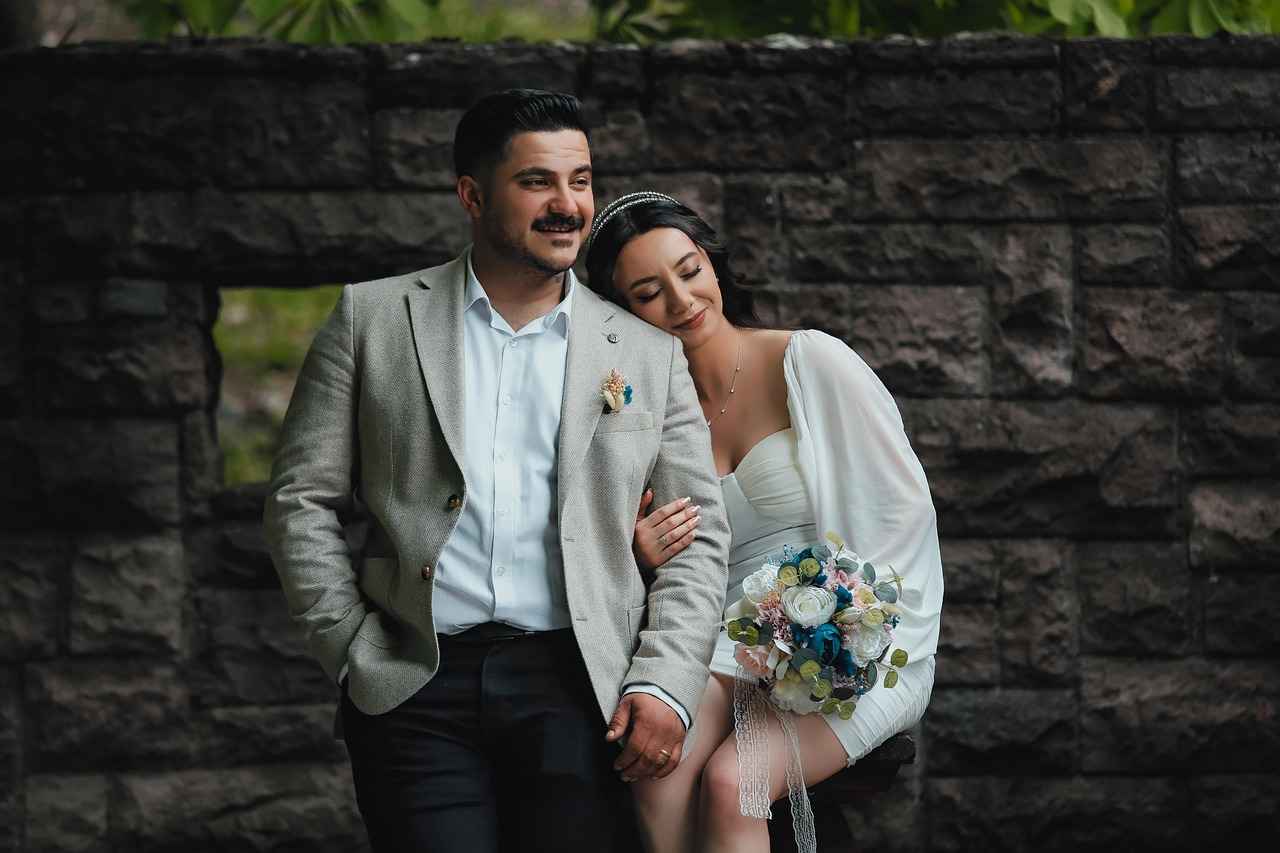
What Are Some Unique Wedding Jewelry Traditions?
Wedding jewelry traditions vary significantly across the globe, each reflecting the unique cultural practices and beliefs of different societies. These traditions not only enhance the beauty of the wedding ceremony but also serve as a means of expressing love, commitment, and familial ties.
Across various cultures, wedding jewelry plays a vital role in the celebration of love and unity. Here are some fascinating traditions that highlight the significance of jewelry in weddings around the world:
- Indian Weddings: The Intricacy of Gold and Gemstones
In Indian culture, wedding jewelry is often elaborate and ornate. Brides typically wear heavy gold jewelry, adorned with precious gemstones. This jewelry not only symbolizes prosperity and beauty but also serves as a form of financial security for the bride. The mangalsutra, a sacred necklace, is particularly significant as it represents the marital bond.
- Jewelry in African Weddings: Heirlooms and Heritage
Many African cultures cherish the tradition of passing down wedding jewelry as family heirlooms. These pieces often carry deep emotional significance and are seen as a symbol of family heritage. For example, in some communities, brides receive intricate beaded necklaces or bracelets that have been in their family for generations, emphasizing the importance of lineage and continuity.
- Chinese Weddings: The Color Red and Symbolism
In Chinese weddings, jewelry is often golden and red, colors that symbolize good fortune and happiness. The bride may wear a golden hairpin or a necklace featuring the character for ‘double happiness’, which signifies a harmonious union. Additionally, the groom’s family often gifts jewelry to the bride, representing their acceptance and blessing of the marriage.
- Jewish Weddings: The Significance of the Ring
In Jewish traditions, the wedding ring is a central element of the ceremony. The groom presents the bride with a simple band, symbolizing his commitment. The ring is often made of gold, representing eternity. It’s customary for the bride to wear it on her right index finger until the ceremony, at which point it is moved to her left hand.
- Scottish Weddings: The Claddagh Ring
The Claddagh ring, originating from Ireland, is a popular choice in Scottish weddings. This ring features two hands holding a heart, topped with a crown, symbolizing friendship, love, and loyalty. It’s often passed down through generations, making it a meaningful choice for couples.
Each of these traditions showcases the rich tapestry of cultural beliefs surrounding wedding jewelry. Whether it is the intricate designs of Indian gold, the family heirlooms in African weddings, or the symbolism in Chinese and Jewish customs, jewelry serves as a powerful representation of love, commitment, and cultural identity.
As couples continue to embrace these diverse traditions, the role of jewelry in weddings will undoubtedly remain a cherished aspect of the celebration, uniting individuals not just in love, but in the shared history and values of their cultures.
Henna and Jewelry in Indian Weddings
In the vibrant tapestry of Indian weddings, henna and jewelry play pivotal roles, each carrying profound cultural significance. These elements are not merely decorative; they are steeped in tradition and symbolism, reflecting the rich heritage of India.
Henna, or mehndi, is a traditional form of body art that involves applying a paste made from the leaves of the henna plant. This art form is particularly significant for brides, as it is believed to bring good luck and prosperity to the marriage. The intricate designs often symbolize fertility and joy, enhancing the overall beauty of the bride. The application of henna is usually accompanied by music and dance, creating a festive atmosphere that marks the beginning of the wedding celebrations.
In conjunction with henna, elaborate jewelry is an essential aspect of the bridal ensemble. Traditional Indian jewelry is often made from gold and adorned with precious stones, each piece representing a unique story or cultural significance. For instance, the nath (nose ring) and maang tikka (forehead ornament) are not just accessories but are considered symbols of a bride’s marital status. The jewelry enhances the bride’s beauty and signifies her family’s wealth and status, adding to the overall opulence of the wedding.
- Necklaces: Often layered, these can range from simple to extravagant designs.
- Ear Jewelry: Large jhumkas (earrings) are popular, adding a traditional touch.
- Bangles: Worn in multiples, bangles are significant and are often gifted by family members.
- Rings: Besides the traditional engagement ring, brides may wear multiple finger rings.
The combination of henna and jewelry in Indian weddings is a reflection of the bride’s cultural identity. Different regions of India have their own unique styles of henna designs and jewelry, showcasing the diversity within Indian culture. For example, brides from Rajasthan might have more intricate henna designs compared to those from Punjab, where bold colors and simpler patterns are favored. Similarly, the type of jewelry worn can vary greatly, with some regions favoring heavy gold pieces while others may opt for lighter, more delicate designs.
Family traditions also significantly influence the choice of henna and jewelry. Many families have heirloom pieces that are passed down through generations, adding sentimental value to the jewelry worn on the wedding day. The application of henna is often a family affair, with close relatives participating in the process, further strengthening familial bonds and reinforcing the importance of cultural heritage.
While traditional practices remain at the forefront, modern influences have begun to reshape how henna and jewelry are perceived in Indian weddings. Many brides now opt for contemporary designs that blend traditional elements with modern aesthetics. This fusion allows for personal expression while still honoring cultural roots. Additionally, the use of organic henna and sustainable jewelry options is gaining popularity, reflecting a growing awareness of environmental issues.
In summary, the interplay of henna and jewelry in Indian weddings is a beautiful representation of culture, tradition, and personal expression. These elements not only enhance the bride’s appearance but also serve as symbols of love, prosperity, and familial bonds, making them integral to the wedding celebration.
Jewelry as Family Heirlooms in African Weddings
Jewelry plays a significant role in the wedding traditions of many cultures, and in African weddings, it is particularly rich in meaning and symbolism. Among various African communities, wedding jewelry is more than just an accessory; it serves as a vital link to family heritage and cultural identity.
In numerous African cultures, wedding jewelry is often passed down through generations, creating a tangible connection between the past and present. These heirlooms are typically crafted with great care and artistry, often featuring intricate designs that reflect the cultural heritage of the family. The act of wearing such jewelry during a wedding ceremony signifies the couple’s commitment not only to each other but also to their familial legacy.
The emotional significance of these heirlooms cannot be overstated. They often carry stories of love, sacrifice, and resilience, making them invaluable to the couple. For many, wearing a piece of jewelry that belonged to a beloved grandparent or parent can evoke feelings of nostalgia and connection. It serves as a reminder that the couple is part of a larger family narrative, enriching their own love story.
- Necklaces: Often adorned with beads or precious metals, these pieces can symbolize protection and prosperity.
- Bracelets: Typically worn by brides, these can signify marital status and are often intricately designed.
- Earrings: These are frequently gifted to brides, enhancing their beauty while also serving as a family tradition.
In contemporary African weddings, the integration of heirloom jewelry into the ceremony has evolved. Many couples choose to blend traditional pieces with modern designs, creating a unique jewelry set that honors their heritage while also reflecting their personal style. This fusion illustrates a dynamic interplay between the old and the new, allowing couples to celebrate their roots while embracing modernity.
The selection of heirloom jewelry is often a family affair. Parents and grandparents may share stories about the significance of each piece, imparting wisdom and traditions that have been cherished over the years. This collaborative process not only strengthens family bonds but also ensures that the couple understands the deep-rooted significance of the jewelry they wear.
Jewelry serves as a powerful expression of cultural identity in African weddings. The designs, materials, and styles used in heirloom pieces can vary significantly from one ethnic group to another, showcasing the rich diversity within African cultures. For instance, certain tribes may favor gold and intricate beadwork, while others may prioritize silver or specific gemstones. This variety not only highlights individual cultural practices but also fosters a sense of pride and belonging.
As African societies continue to evolve, so too does the significance of wedding jewelry. Emerging trends show a growing interest in sustainable and ethically sourced materials, with couples increasingly seeking out heirloom pieces that are both beautiful and environmentally friendly. This shift reflects a broader global consciousness about the impact of consumer choices on the environment and society.
In conclusion, jewelry as family heirlooms in African weddings encapsulates the essence of heritage, love, and continuity. These pieces are not merely adornments; they are symbols of familial bonds and cultural identity, enriching the wedding experience for couples and their families alike.
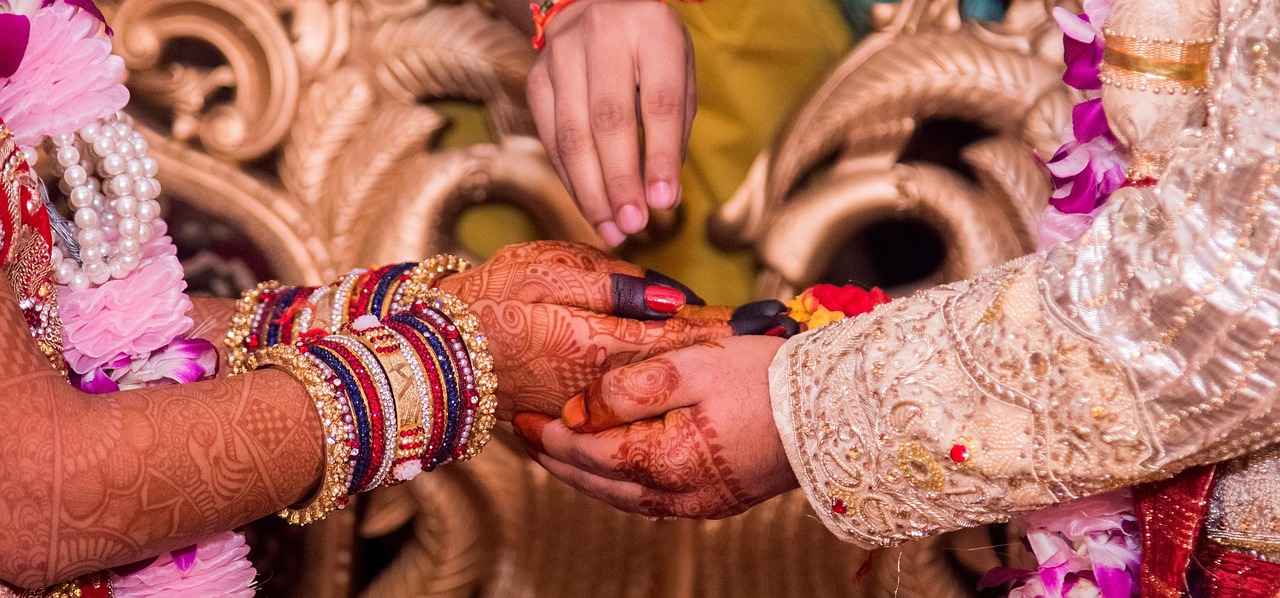
How Do Modern Trends Influence Wedding Jewelry?
In recent years, the world of wedding jewelry has undergone a remarkable transformation, driven by contemporary influences that emphasize personalization, sustainability, and the seamless blending of traditional and modern styles. These trends not only reflect changing consumer preferences but also signify a deeper connection between couples and their unique love stories.
Personalization has become a cornerstone of modern wedding jewelry. Couples are increasingly seeking pieces that resonate with their individual stories and values. This trend manifests in various ways:
- Custom Engravings: Many couples opt for rings or pendants engraved with meaningful dates, initials, or phrases that symbolize their relationship.
- Unique Designs: Instead of traditional designs, couples are exploring bespoke jewelry that reflects their personalities, often incorporating elements that hold special significance.
- Family Heirlooms: Some are choosing to repurpose family jewelry, adding a layer of history and sentimentality to their wedding pieces.
The growing awareness of environmental and ethical issues has led many couples to prioritize sustainability in their wedding jewelry selections. This shift includes:
- Ethically Sourced Materials: Couples are now more informed about where their gemstones and metals come from, opting for conflict-free diamonds and recycled materials.
- Eco-Friendly Practices: Jewelers who adopt sustainable practices, such as using lab-grown diamonds or environmentally friendly production methods, are gaining popularity.
- Minimalist Designs: The trend towards minimalism not only reduces waste but also emphasizes quality over quantity, leading to timeless pieces that can be cherished for years.
Modern couples are increasingly drawn to jewelry that fuses traditional elements with contemporary aesthetics. This blending can be seen in:
- Mixed-Material Designs: Jewelry that combines different metals, such as white gold with rose gold, offers a fresh take on classic styles.
- Innovative Gemstone Choices: While diamonds are still popular, alternative gemstones like sapphires, emeralds, and even colored diamonds are making their mark, allowing couples to express their individuality.
- Cultural Influences: Many couples are incorporating cultural motifs and designs into their wedding jewelry, celebrating their heritage while embracing modern trends.
The impact of these contemporary trends extends beyond aesthetics; they enhance the overall wedding experience. Couples are now able to:
- Create Lasting Memories: Personalized jewelry becomes a part of the couple’s story, making the wedding day even more memorable.
- Engage with Their Values: By choosing sustainable options, couples can align their purchases with their ethical beliefs, contributing to a positive impact on the planet.
- Express Their Unique Style: The ability to customize and blend styles allows couples to showcase their personalities, making their wedding jewelry truly one-of-a-kind.
In conclusion, the modern trends influencing wedding jewelry reflect broader societal changes. As couples seek to personalize their experiences, prioritize sustainability, and blend traditional with contemporary styles, the jewelry they choose becomes a profound expression of their love and commitment. These evolving trends not only redefine the significance of wedding jewelry but also celebrate individuality, heritage, and ethical considerations in a meaningful way.
Personalized Jewelry: A Reflection of Individuality
In today’s world, the significance of personalized jewelry has grown tremendously, especially in the context of weddings. Couples are increasingly seeking ways to express their individuality and unique love stories through their jewelry choices. This trend has led to a surge in demand for customized pieces that go beyond traditional designs, allowing each couple to create something truly special.
Personalized jewelry serves as a lasting symbol of a couple’s commitment and shared experiences. By incorporating elements such as initials, significant dates, or custom engravings, couples can craft pieces that resonate deeply with their personal journey. This level of customization not only enhances the emotional value of the jewelry but also makes it a cherished heirloom for future generations.
- Engravings: Many couples opt for meaningful phrases, vows, or dates engraved on rings, bracelets, or necklaces. This adds a personal touch that speaks to their unique relationship.
- Initials: Incorporating initials of both partners can create a beautiful connection between the two individuals. This is often done in a delicate font or intertwined design.
- Birthstones: Using birthstones in wedding jewelry can symbolize each partner’s individuality while also representing their union. This option allows for vibrant color combinations and personal significance.
- Custom Designs: Some couples choose to work with jewelers to create entirely custom pieces that reflect their style and story, making their jewelry truly one-of-a-kind.
The act of personalizing jewelry often strengthens the emotional bond between partners. By choosing elements that hold special meaning, couples can celebrate their journey together. For instance, a simple engraving of a wedding date can evoke memories of the day they exchanged vows, serving as a daily reminder of their commitment.
Personalized jewelry is not only a modern trend but also reflects various cultural practices. In many cultures, couples incorporate traditional symbols or motifs into their jewelry designs. For example, in some Eastern cultures, intricate designs may hold specific meanings related to love and prosperity, while in Western cultures, minimalistic and modern designs are favored.
Advancements in technology have revolutionized the way couples approach personalized jewelry. 3D printing and computer-aided design (CAD) allow for precise customization, enabling couples to visualize and modify their designs before creating the final piece. This technological integration not only enhances creativity but also ensures that the jewelry is crafted to the couple’s exact specifications.
To ensure that their personalized jewelry stands out, couples should consider collaborating with local artisans or independent jewelers who specialize in custom designs. This approach not only supports small businesses but also fosters a more personal connection with the craftsmanship involved. Additionally, couples can draw inspiration from their shared experiences, hobbies, or favorite places to create a piece that is truly reflective of their relationship.
In conclusion, personalized jewelry is more than just an accessory; it is a profound expression of love and individuality. As couples continue to embrace this trend, they are not only creating beautiful pieces of art but also crafting lasting memories that will be cherished for years to come.
Sustainable and Ethical Jewelry Choices
As the world becomes increasingly conscious of environmental and ethical issues, couples planning their weddings are making more informed choices about their jewelry. The shift towards sustainable and ethical jewelry options is not just a trend; it reflects a broader commitment to responsible practices within the jewelry industry. This article delves into the significance of sustainable jewelry, its benefits, and how couples can make eco-friendly choices for their special day.
Sustainable jewelry refers to pieces that are created with minimal environmental impact and ethical labor practices. This includes using recycled materials, responsibly sourced gemstones, and ensuring fair wages for artisans. By choosing sustainable jewelry, couples can make a statement about their values, demonstrating a commitment to both their relationship and the planet.
Opting for ethical jewelry not only supports responsible mining practices but also helps combat the negative impacts of traditional jewelry manufacturing. Many gemstones are mined in conditions that exploit workers and harm the environment. By selecting jewelry from ethical sources, couples can contribute to a more sustainable future.
- Environmental Impact: Sustainable jewelry often utilizes recycled materials, reducing the need for new mining and lowering carbon footprints.
- Support for Artisans: Many sustainable jewelers work directly with artisans, ensuring fair wages and safe working conditions.
- Unique Designs: Sustainable pieces often feature unique designs, as they may incorporate alternative gemstones or innovative materials.
- Personal Values: Choosing sustainable jewelry allows couples to align their purchases with their personal and ethical values.
Finding sustainable jewelry involves research and awareness. Here are some tips for couples looking to make eco-friendly choices:
- Research Brands: Look for jewelers who are transparent about their sourcing practices and materials.
- Ask Questions: Don’t hesitate to inquire about the origins of the materials and the conditions under which they were made.
- Consider Vintage Options: Vintage or second-hand jewelry can be a sustainable choice, as it reduces demand for new materials.
- Look for Certifications: Check for certifications that indicate ethical sourcing, such as Fair Trade or Responsible Jewellery Council certifications.
As sustainable jewelry gains popularity, several trends are emerging:
- Alternative Gemstones: Many couples are opting for gemstones like sapphires, emeralds, or lab-created diamonds as ethical alternatives to traditional diamonds.
- Recycled Materials: Jewelry made from recycled gold and silver is becoming more common, allowing couples to wear beautiful pieces without the environmental toll.
- Custom Designs: Personalized jewelry that incorporates sustainable practices is on the rise, enabling couples to create unique pieces that reflect their love story.
Choosing sustainable and ethical jewelry is more than just a trend; it’s a powerful statement about love and responsibility. By selecting pieces that are environmentally friendly and ethically sourced, couples can ensure their wedding jewelry not only symbolizes their commitment to each other but also to the planet. With a variety of options available, it has never been easier to make choices that reflect personal values while celebrating love.
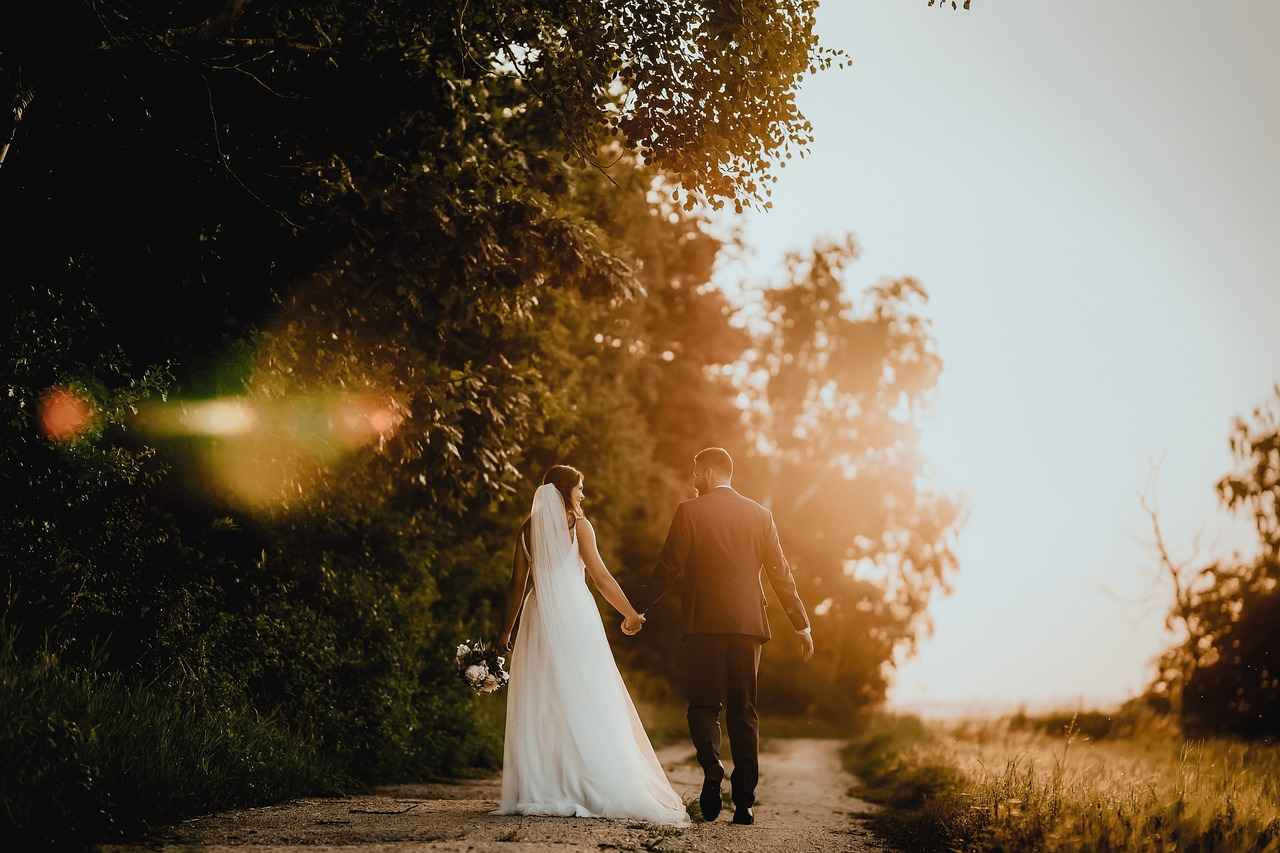
What Role Does Jewelry Play in Wedding Rituals?
Jewelry has long been a significant element in wedding rituals across various cultures, serving as a powerful symbol of love and commitment. The exchange of jewelry during ceremonies often marks pivotal moments, reinforcing the vows made by the couple. In many traditions, these pieces are not merely decorative but are imbued with deep cultural meanings and emotional significance.
During wedding ceremonies, jewelry often takes center stage, showcasing the couple’s unity and shared journey. The act of exchanging rings or other significant pieces serves as a public declaration of their commitment. This moment is often accompanied by heartfelt vows, making it a memorable highlight of the ceremony.
Wedding jewelry is rich in symbolism. For instance, rings are typically circular, representing eternity and the unbroken bond between partners. In many cultures, specific materials and stones are chosen for their meanings; for example, diamonds symbolize strength and purity, while sapphires are believed to bring fidelity. Such choices reflect the couple’s values and aspirations for their life together.
Different cultures have unique practices regarding wedding jewelry, which often reflect their historical and social contexts. In Indian weddings, for instance, bridal jewelry is elaborate and often includes gold and gemstones, symbolizing prosperity and well-being. In contrast, Western traditions may focus primarily on the exchange of simple gold or platinum rings, emphasizing a more minimalist aesthetic.
- Indian Weddings: In addition to rings, brides often wear mangalsutra and nath (nose rings), which are significant in their ceremonies.
- African Traditions: Many African cultures incorporate traditional jewelry as part of the marriage process, often passed down through generations, symbolizing continuity and family heritage.
- Jewish Weddings: The bride often receives a ketubah (marriage contract) adorned with intricate designs, sometimes featuring embedded jewels, symbolizing the couple’s commitment.
In many traditions, jewelry is not just a personal symbol but also a representation of family and community ties. Family members often present jewelry to the couple as a blessing, signifying their support and love. This act enriches the ceremony, as it connects the couple to their heritage and the wishes of their loved ones.
As wedding customs evolve, so does the role of jewelry. Many modern couples are opting for personalized pieces that reflect their unique stories. This trend includes custom engravings or the incorporation of non-traditional materials, allowing couples to express their individuality while still honoring the significance of their commitment.
Contemporary trends are reshaping the jewelry landscape in weddings. The rise of sustainable and ethically sourced materials has become increasingly important to couples, reflecting a broader societal shift towards responsible consumption. Moreover, the blending of traditional and modern styles allows couples to create unique pieces that resonate with their personal values and aesthetics.
In conclusion, jewelry plays a multifaceted role in wedding rituals, serving as a symbol of commitment, a reflection of cultural heritage, and a means of expressing individuality. As traditions continue to evolve, the significance of jewelry in weddings remains a powerful testament to love and unity.
Exchange of Jewelry During Ceremonies
The exchange of jewelry during wedding ceremonies is a profound ritual that transcends cultural boundaries, embodying the essence of love and commitment. This act is not merely a tradition; it is a celebration of unity that brings together not just the couple, but their families and communities as well. In many cultures, this moment is steeped in emotion, symbolizing the vows exchanged and the promises made for a shared future.
The significance of exchanging jewelry lies in its ability to serve as a tangible reminder of the couple’s commitment. Each piece of jewelry carries meaning, often representing love, fidelity, and the intertwining of two lives. This act reinforces the couple’s vows and is often accompanied by heartfelt sentiments expressed in the presence of loved ones.
Across the globe, the exchange of jewelry takes on various forms, reflecting the unique traditions and values of each culture. For instance:
- Western Traditions: In Western weddings, the exchange of wedding rings is a common practice. The circular shape symbolizes eternity, while the materials used often hold personal significance. Couples may choose gold, silver, or even platinum to represent their bond.
- Indian Weddings: In Indian culture, the exchange of jewelry is often elaborate, with brides adorned in intricate gold pieces. Jewelry is not only a symbol of wealth but also carries auspicious meanings, believed to bring prosperity and good fortune.
- African Ceremonies: In many African cultures, the exchange of jewelry often includes family heirlooms, symbolizing the continuity of family heritage. These pieces are treasured and carry deep emotional significance, representing the union of two families.
During the exchange of jewelry, emotions run high. Couples often experience a mix of joy, excitement, and vulnerability. This moment is typically celebrated with family and friends, creating an atmosphere filled with love and support. The presence of loved ones adds to the emotional weight of the ceremony, turning the exchange into a communal celebration of love.
In many cultures, jewelry is not only exchanged between the couple but also gifted by family members. This act serves as a blessing from the family, signifying their support and acceptance of the union. Such gifts often hold sentimental value and are cherished for generations, further solidifying the bond between the couple and their families.
As societies evolve, so do wedding traditions. Modern couples often blend traditional practices with contemporary influences, leading to unique expressions of love. For example, some may opt for customized jewelry that reflects their personal stories, incorporating elements that resonate with their relationship. This personalization adds depth to the exchange, making it even more meaningful.
The exchange of jewelry during wedding ceremonies is a powerful ritual that encapsulates the essence of love, commitment, and family. Whether through traditional practices or modern adaptations, this act remains a cherished element of weddings around the world, celebrating the union of two individuals and their families.
Jewelry as a Blessing from Family
When it comes to weddings, the significance of jewelry extends beyond mere adornment; it embodies deep-rooted traditions and familial bonds. One of the most touching aspects of wedding ceremonies around the globe is the role of family in presenting jewelry to the couple. This act is not just a gesture; it is a profound symbol of support, love, and the blessings bestowed upon the newlyweds.
In many cultures, the act of gifting jewelry from family members to the couple signifies a continuation of lineage and the merging of two families. This tradition reinforces the idea that marriage is not just a union of two individuals but also a bond between their families. The jewelry serves as a tangible reminder of this support and love, often carrying emotional weight that transcends its material value.
The types of jewelry presented can vary widely, reflecting cultural significance and personal preferences. Common forms include:
- Rings: Often symbolizing eternity, rings passed down from generations can hold deep family significance.
- Necklaces: These can be ornate pieces that reflect the family’s heritage or simpler designs that complement the couple’s style.
- Bracelets: In some cultures, bracelets are given as a sign of protection and strength.
Different cultures have unique interpretations of this tradition. For instance, in Indian weddings, it is common for the bride’s family to present intricate gold jewelry, believed to bring prosperity and happiness. In contrast, in Western cultures, family members may present diamond rings or other precious stones, symbolizing enduring love and commitment.
The emotional significance of gifting jewelry during weddings cannot be overstated. It often evokes feelings of joy, nostalgia, and a sense of belonging. As family members witness the union of the couple, they feel a connection to their own past, reminding them of their own weddings and the love that binds families together.
Incorporating jewelry as a blessing from family enriches the wedding ceremony itself. It transforms the event into a collective celebration rather than just a personal milestone. The couple, surrounded by loved ones, receives not only material gifts but also emotional and spiritual support, reinforcing their commitment to one another.
As societal norms evolve, so do the interpretations of this tradition. Many couples today are choosing to personalize the jewelry they receive, incorporating elements that reflect their individual stories or shared experiences. This modern twist allows the couple to honor their families while also expressing their unique identities.
Jewelry given as a blessing often becomes a cherished heirloom, passed down through generations. It serves as a constant reminder of the love and support from family, creating a legacy that enriches the couple’s journey together. This enduring impact highlights the importance of family in the context of marriage, emphasizing that the bonds formed during this union extend far beyond the couple themselves.
In conclusion, the act of presenting jewelry as a blessing from family members is a profound tradition that encapsulates love, support, and the merging of families. It enhances the emotional depth of the wedding ceremony and serves as a lasting symbol of commitment and heritage.
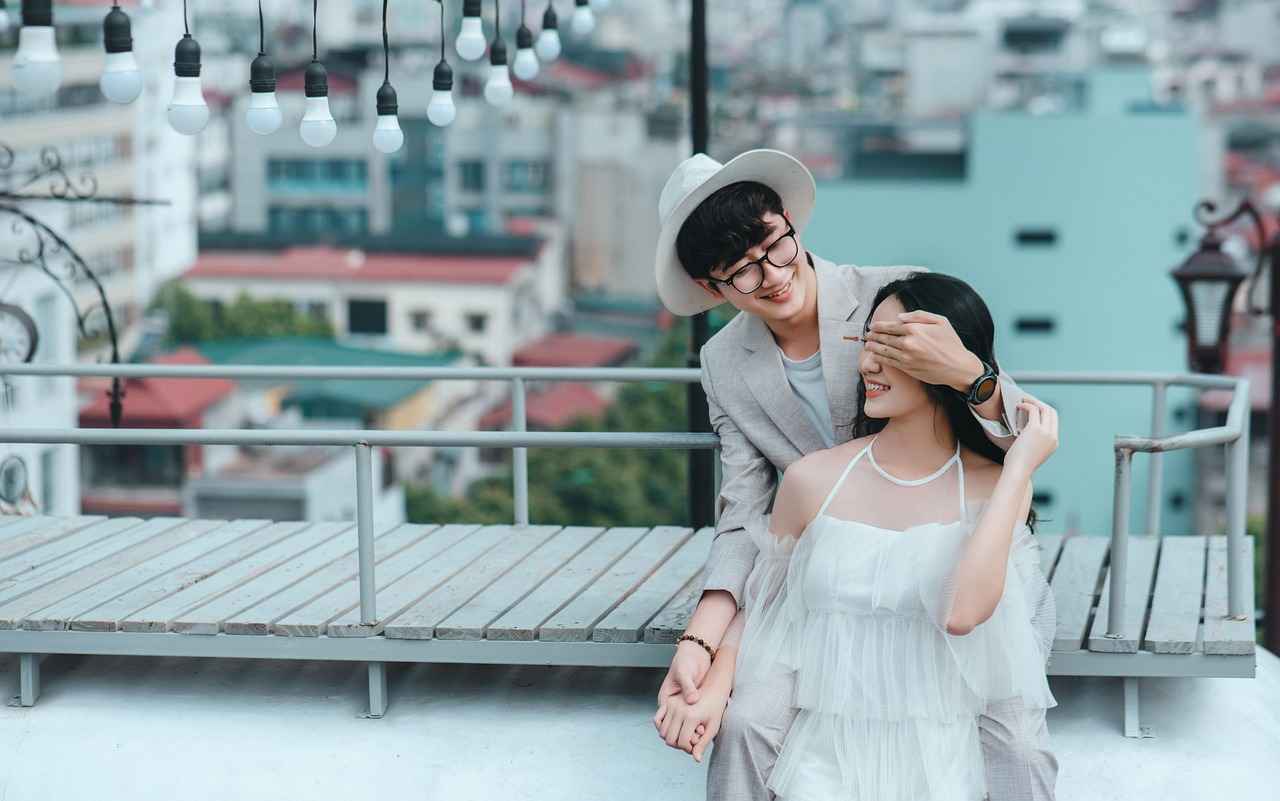
How Does Jewelry Impact Wedding Fashion?
Jewelry plays a pivotal role in shaping the overall aesthetic of wedding fashion, significantly enhancing the attire of both the bride and groom. The right pieces not only add a touch of elegance but also serve as a reflection of the couple’s personal styles and cultural backgrounds.
Wedding jewelry is more than just an accessory; it is a symbol of love and commitment. The pieces chosen for the big day can elevate the entire look and feel of the wedding attire. By selecting jewelry that resonates with their personal style, couples can express their individuality and make a statement on one of the most important days of their lives.
For brides, jewelry serves as a crucial element that can transform a wedding dress from beautiful to breathtaking. Necklaces, earrings, and bracelets can complement the gown’s neckline and overall design. For instance, a simple, elegant dress may be paired with sparkling chandelier earrings to add a touch of glamour, while a more intricate gown might benefit from understated pieces that do not overwhelm the overall look.
The color of the jewelry can also have a significant impact on the overall wedding theme. Many brides choose colored gemstones that match their wedding palette, adding a unique touch that reflects their personality. For example, sapphires or emeralds can provide a striking contrast to traditional white dresses, while still maintaining an air of sophistication.
Traditionally, grooms have had fewer options when it comes to wedding accessories. However, this trend is changing, with many grooms now opting for stylish cufflinks, watches, and tie clips that enhance their overall look. These accessories allow grooms to express their personal style and add a modern twist to classic wedding attire.
Jewelry choices often reflect cultural heritage, adding layers of meaning to wedding fashion. For instance, in Indian weddings, brides typically wear elaborate gold jewelry that symbolizes prosperity and good fortune. Similarly, in African cultures, jewelry may be passed down as family heirlooms, serving as a connection to ancestry and tradition.
As wedding customs evolve, so too do the trends in wedding jewelry. Many couples are now leaning towards personalized pieces that tell their unique love story, such as custom engravings or matching sets. Additionally, there is a growing emphasis on sustainability, with couples seeking ethically sourced materials that align with their values.
The jewelry selected for a wedding can serve as a powerful expression of personal style. Couples are increasingly choosing pieces that resonate with their tastes, whether that means opting for vintage designs, modern minimalist styles, or bold statement pieces. This trend emphasizes the importance of individuality in wedding fashion.
Looking ahead, the future of wedding jewelry is likely to be shaped by continued innovation in design and materials. Advancements in technology are making it easier for couples to create bespoke pieces that reflect their personalities and stories. As cultural diversity continues to influence wedding practices, we can expect to see even more unique and meaningful jewelry choices in the years to come.
In summary, wedding jewelry is a vital component of wedding fashion that enhances the couple’s overall look while reflecting their personal styles and cultural backgrounds. As trends evolve, the significance and impact of jewelry in weddings will continue to grow, making it an essential aspect of the celebration.
Complementing Wedding Dresses with Jewelry
The right jewelry can transform a wedding dress, adding an extra layer of elegance and sophistication that enhances the overall bridal look. Brides often select jewelry pieces that not only complement their gown’s style but also reflect their personal taste and the theme of their wedding.
How Can Jewelry Enhance the Wedding Dress?
- Style Coordination: The jewelry chosen should harmonize with the dress’s design. For instance, a vintage lace gown pairs beautifully with antique-style jewelry, while a modern, sleek dress may call for minimalist pieces.
- Color Matching: The color of the jewelry can either match or contrast with the gown. For a white dress, silver or platinum jewelry often works well, while a colored gown might be complemented by gold or rose gold.
- Fabric Consideration: Different fabrics reflect light differently. A satin gown might shine brightly with sparkling pieces, whereas a matte fabric may benefit from more textured jewelry to create visual interest.
What Types of Jewelry Should Brides Consider?
- Necklaces: A statement necklace can draw attention to the bride’s neckline, especially for strapless or off-the-shoulder dresses. Delicate chains or chokers can add a touch of subtlety.
- Earrings: Earrings can frame the face beautifully. Long, dangling earrings can create a dramatic effect, while stud earrings offer a classic look.
- Bracelets: A bracelet can add elegance to the wrist, especially if the dress has a fitted sleeve or is sleeveless. Consider stacking multiple delicate bracelets for a modern touch.
- Hair Accessories: Hairpieces, whether they are simple pins or elaborate tiaras, can complete the bridal look, adding sparkle and drawing attention to the hairstyle.
How to Choose Jewelry Based on Wedding Themes?
Brides should consider their wedding theme when selecting jewelry. For a rustic wedding, nature-inspired pieces made of wood or stones can enhance the organic feel. In contrast, a glamorous affair may call for bold, sparkling jewelry that stands out against a more elaborate gown.
What Role Does Personal Style Play?
Ultimately, the jewelry should reflect the bride’s personal style. Whether opting for traditional pieces passed down through generations or modern, custom-made items, the jewelry should resonate with the bride’s identity. Personalized touches, such as engravings or unique gemstone choices, can make the jewelry even more special.
How to Ensure Comfort with Jewelry Choices?
Comfort is key on a wedding day. Brides should ensure that their jewelry does not weigh them down or cause irritation. It’s advisable to wear the jewelry during fittings and practice moving in it to ensure it feels right throughout the day.
In conclusion, the right jewelry can significantly elevate a wedding dress, enhancing the bride’s overall appearance and making her feel even more special on her big day. By considering style, color, theme, and personal comfort, brides can select pieces that not only complement their gowns but also reflect their unique personalities.
Groom’s Accessories: A Growing Trend
In recent years, the importance of groom’s accessories has significantly increased, reflecting a shift in the way we view men’s fashion in weddings. While traditionally overlooked, elements such as cufflinks, watches, and even ties have become essential components of a groom’s attire, allowing for personal expression and style enhancement.
Groom’s accessories are gaining traction for several reasons. First and foremost, they provide a unique opportunity for self-expression. Just as brides have their intricate dresses and elaborate jewelry, grooms are now embracing the chance to showcase their personality through carefully selected accessories. This shift aligns with a broader trend in weddings where personalization is key.
- Cufflinks: These small yet impactful items can transform a simple shirt into something extraordinary. Whether they are classic silver, personalized with initials, or themed to reflect the couple’s interests, cufflinks are a must-have.
- Watches: A well-chosen watch not only serves a practical purpose but also acts as a statement piece. From vintage styles to modern smartwatches, the choice can reflect the groom’s taste and lifestyle.
- Ties and Bowties: The right neckwear can tie the entire look together. Grooms are increasingly opting for unique patterns, colors, and materials that complement their wedding theme.
- Belts and Shoes: Accessories like belts and shoes are not to be forgotten. Coordinating these with the overall outfit can enhance the groom’s appearance significantly.
The right accessories can elevate a groom’s outfit from ordinary to extraordinary. For instance, a pair of striking cufflinks can draw attention and spark conversation, while a sophisticated watch adds an air of elegance. Additionally, these accessories can reflect the couple’s theme, whether it be rustic, modern, or vintage.
As fashion evolves, so do the trends surrounding groom’s accessories. Some notable trends include:
- Personalization: Many grooms are choosing personalized accessories, such as engraved cufflinks or custom-made ties, that tell a story about their relationship.
- Mixing Textures: Combining different materials, like leather and metal, can create a visually interesting look that stands out.
- Statement Pieces: Bold accessories that make a statement, such as a unique pocket square or an eye-catching tie, are becoming increasingly popular.
Choosing the right accessories involves considering several factors:
- Wedding Theme: The accessories should align with the overall theme and color palette of the wedding.
- Personal Style: Grooms should select pieces that reflect their personal style and comfort level.
- Coordinating with the Bride: It’s essential to consider how the accessories will complement the bride’s attire, creating a harmonious look for the couple.
In conclusion, groom’s accessories are no longer an afterthought but rather an integral part of wedding attire. As grooms increasingly seek ways to express their individuality, accessories such as cufflinks and watches play a vital role in enhancing their overall look. By embracing these elements, grooms can add a touch of personal style and sophistication to their wedding day ensemble.
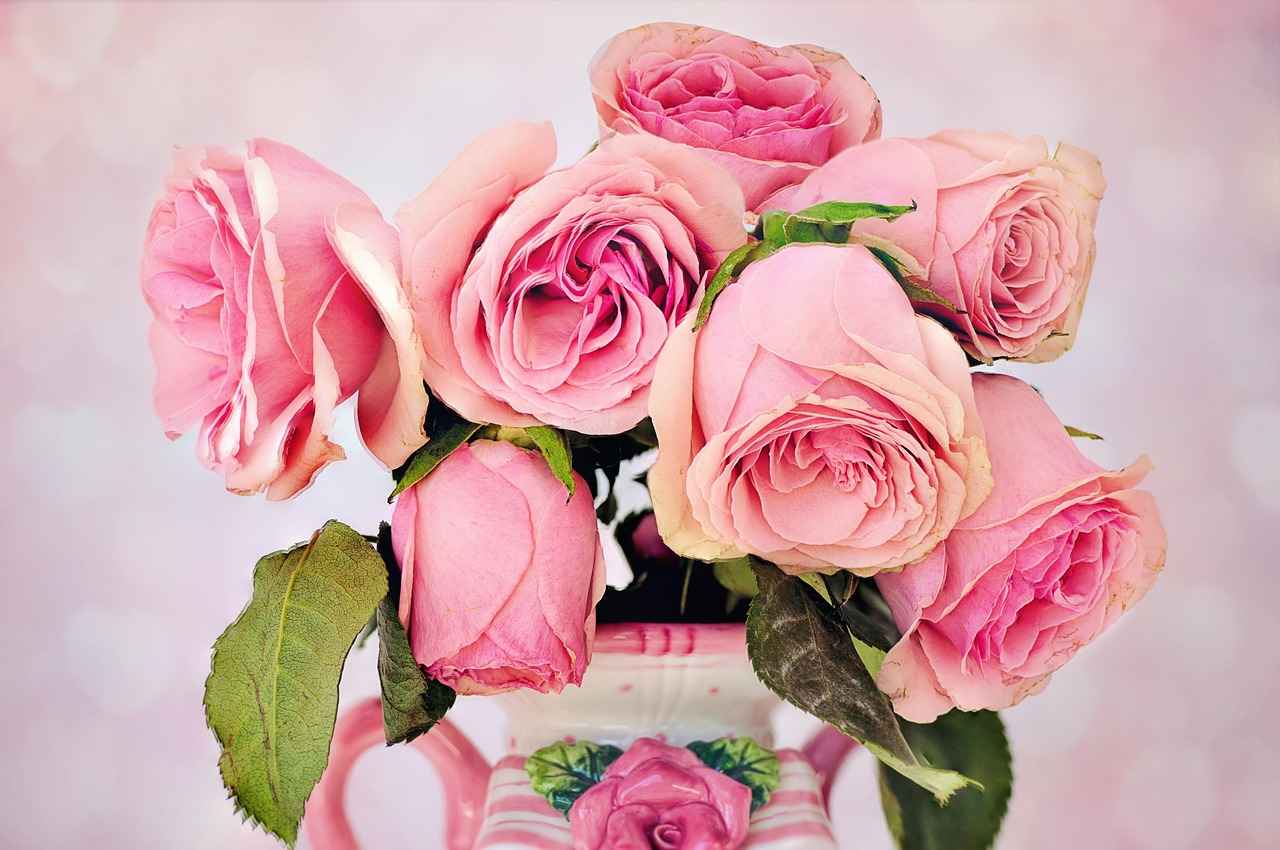
What Are the Future Trends in Wedding Jewelry?
As the landscape of wedding traditions continues to evolve, so too does the jewelry associated with these momentous occasions. The future of wedding jewelry is being shaped by several key trends, reflecting the desires and values of modern couples. This article delves into the upcoming trends in wedding jewelry, emphasizing personalization, sustainability, and cultural fusion.
Personalization has emerged as a significant trend in wedding jewelry, allowing couples to express their unique love stories through custom designs. This trend encompasses a variety of elements, from engraving initials and wedding dates to incorporating birthstones or other meaningful symbols. By choosing personalized pieces, couples can create jewelry that not only complements their style but also carries deep emotional significance.
In recent years, there has been a growing awareness of the environmental and ethical implications of jewelry production. Many couples are now prioritizing sustainable and ethical jewelry choices. This trend emphasizes the importance of responsibly sourced materials and fair labor practices. Couples are increasingly opting for conflict-free diamonds, recycled metals, and lab-grown gemstones, ensuring that their wedding jewelry aligns with their values.
As globalization continues to connect diverse cultures, the blending of traditions is becoming a hallmark of modern weddings. Cultural fusion in wedding jewelry allows couples to honor their heritages while creating unique pieces that reflect their shared journey. For instance, a couple might combine traditional elements from their respective cultures, such as incorporating motifs or materials that are significant to each background, resulting in a one-of-a-kind piece that tells their story.
Technological advancements are revolutionizing the way wedding jewelry is designed and produced. With the rise of 3D printing and computer-aided design (CAD), jewelers can create intricate and customized pieces more efficiently. This technology not only allows for greater creativity but also enables couples to visualize their designs before production, ensuring that the final product meets their expectations.
While diamonds have long been the traditional choice for engagement rings, many couples are now gravitating towards alternative gemstones. Options such as sapphires, emeralds, and morganite offer unique colors and meanings, allowing couples to select stones that resonate with their personal styles and values. Additionally, these alternatives can often be more affordable and ethically sourced than traditional diamonds.
Modern couples are taking a more thoughtful approach to wedding jewelry, considering not just aesthetics but also the story behind each piece. Many are seeking out local artisans and small businesses to create custom designs, supporting their communities while ensuring their jewelry is unique. This shift towards conscious consumerism reflects a broader trend of valuing experiences and meaningful connections over material possessions.
The future of wedding jewelry is bright, with trends that prioritize personalization, sustainability, and cultural fusion. As couples continue to seek pieces that reflect their individuality and values, the jewelry industry is adapting to meet these demands. The emphasis on ethical practices and unique designs not only enriches the wedding experience but also fosters a deeper connection between couples and their jewelry.
In conclusion, the evolution of wedding jewelry is a testament to the changing dynamics of love and commitment. By embracing these emerging trends, couples can create lasting symbols of their union that resonate with their identities and values.
Embracing Cultural Diversity in Jewelry Choices
As the world becomes increasingly interconnected, the fusion of cultures is more prevalent than ever, especially in the realm of wedding traditions. One of the most significant aspects of this cultural blending is seen in wedding jewelry. Couples today are not only honoring their individual heritages but also creating unique pieces that symbolize their shared journey.
Embracing cultural diversity in wedding jewelry allows couples to celebrate their unique identities while simultaneously forging a new path together. This practice reflects a broader trend where individuals seek to incorporate meaningful elements from both partners’ backgrounds, creating a more personalized representation of their love story.
- Materials: Couples often select materials that are significant to their cultures. For example, a couple might choose gold from one partner’s heritage and silver from another’s, symbolizing the merging of their backgrounds.
- Designs: Traditional motifs and symbols from each culture can be combined into a single design. This might include engraving significant cultural symbols on wedding bands or incorporating traditional patterns into the jewelry.
- Gemstones: Different cultures attribute various meanings to gemstones. By selecting stones that resonate with both partners, couples can create pieces that carry deep personal significance.
Many couples are taking inspiration from their respective cultures to create wedding jewelry that tells a story:
- Indian and Western Fusion: A bride might wear a traditional Indian necklace adorned with intricate designs alongside a Western-style diamond engagement ring, merging both aesthetics beautifully.
- African and Asian Influences: Jewelry that incorporates vibrant colors and patterns from African cultures can be paired with delicate Asian-inspired designs, creating a stunning contrast that honors both heritages.
The trend of embracing cultural diversity in wedding jewelry has led to a rise in customization and personalization. Couples are increasingly seeking jewelers who can create bespoke pieces that reflect their unique blend of traditions. This not only results in one-of-a-kind jewelry but also allows for a deeper connection to their roots.
Advancements in technology have made it easier for couples to design and create custom jewelry. With the help of 3D printing and digital design tools, couples can visualize their ideas and collaborate with jewelers to bring their visions to life. This innovation allows for greater creativity and precision, ensuring that the final piece is a true reflection of their cultural fusion.
While blending cultures in wedding jewelry is a beautiful expression of love, it is crucial to approach this practice with respect and understanding. Couples should educate themselves about the cultural significance of the elements they wish to incorporate. This awareness not only honors their backgrounds but also fosters a deeper appreciation for the rich tapestry of traditions that shape their identities.
In conclusion, the trend of embracing cultural diversity in wedding jewelry is a powerful testament to the evolving nature of love and partnership. By blending elements from both partners’ heritages, couples create unique pieces that symbolize their commitment and shared journey. This practice not only enriches their wedding experience but also celebrates the beauty of cultural diversity in a meaningful way.
Technological Innovations in Jewelry Design
In the ever-evolving world of wedding jewelry, technological innovations are playing a pivotal role in transforming how couples select and design their pieces. From 3D printing to advanced customization software, technology is enabling a new era of creativity and personalization that was previously unimaginable.
One of the most significant advancements in jewelry design is the use of 3D printing and Computer-Aided Design (CAD). These technologies allow designers to create intricate and detailed designs with precision. Couples can now collaborate with jewelers to produce unique pieces that reflect their individual styles and stories.
- Customization: Couples can modify existing designs or create entirely new ones, ensuring their jewelry is one-of-a-kind.
- Rapid Prototyping: 3D printing enables quick iterations, allowing for adjustments before the final piece is crafted.
- Cost-Effectiveness: Advanced technology can reduce production costs, making bespoke jewelry more accessible.
Augmented Reality (AR) has revolutionized the way couples shop for wedding jewelry. With AR technology, users can virtually try on rings and other pieces from the comfort of their homes.
- Enhanced Experience: Couples can visualize how different styles and sizes look on them, making the selection process more enjoyable.
- Informed Decisions: By seeing how a piece complements their skin tone and personal style, couples can make more confident purchasing decisions.
The rise of online jewelry retailers has transformed the wedding jewelry market. With various platforms available, couples now have access to a broader range of styles and price points. These platforms often feature user-friendly interfaces that allow for easy customization.
- Wider Selection: Couples can explore numerous options without the limitations of physical stores.
- Customer Reviews: Online platforms often provide reviews and ratings, helping couples make informed choices based on others’ experiences.
As awareness of environmental issues grows, many jewelers are adopting sustainable practices through technology. Innovations such as ethical sourcing and lab-grown diamonds are becoming increasingly popular.
- Lab-Grown Diamonds: These stones offer a conflict-free alternative to mined diamonds, appealing to eco-conscious couples.
- Recycled Materials: Modern techniques allow jewelers to create beautiful pieces from recycled metals and stones, reducing waste.
With technological advancements, customization has become a key feature in wedding jewelry design. Couples can engrave meaningful messages, select unique gemstones, or incorporate symbols that resonate with their relationship.
- Personal Touch: Customized pieces tell a story, making the jewelry more significant and cherished.
- Symbolism: Incorporating personal elements can enhance the emotional value of the jewelry, turning it into a family heirloom.
In conclusion, the technological innovations in wedding jewelry design are reshaping the industry, allowing for greater creativity, personalization, and sustainability. As these trends continue to evolve, couples can look forward to creating pieces that not only symbolize their love but also reflect their values and individuality.
Frequently Asked Questions
- What does wedding jewelry symbolize?
Wedding jewelry often symbolizes love, commitment, and the union of two individuals. It’s a tangible representation of vows and the beginning of a shared journey, making it an essential part of the wedding ceremony.
- How does jewelry vary across cultures?
Different cultures have unique traditions regarding wedding jewelry, which reflect their values, beliefs, and historical contexts. These variations showcase the diversity of wedding customs around the world, making each celebration unique.
- What are some unique wedding jewelry traditions?
Many cultures have distinct wedding jewelry traditions. For example, in Indian weddings, henna and elaborate jewelry signify beauty and prosperity, while in African cultures, wedding jewelry often serves as family heirlooms symbolizing heritage and continuity.
- How do modern trends influence wedding jewelry?
Contemporary trends are reshaping wedding jewelry, focusing on personalization and sustainability. Couples are increasingly choosing unique pieces that reflect their individual love stories and opting for ethical sourcing practices.
- What role does jewelry play in wedding rituals?
Jewelry often plays a central role in wedding rituals, serving as a focal point during ceremonies. The exchange of jewelry reinforces vows and is often accompanied by blessings from family, adding emotional significance to the occasion.
- How does jewelry impact wedding fashion?
Wedding jewelry significantly influences the overall fashion of the wedding attire. The right pieces can elevate a bride’s gown or add personality to a groom’s outfit, making them essential elements of the wedding look.
- What are the future trends in wedding jewelry?
Future trends suggest a continued shift towards personalization, sustainability, and cultural fusion in wedding jewelry. As globalization increases, couples are blending cultural elements into their jewelry choices, creating unique pieces that honor both partners’ heritages.


